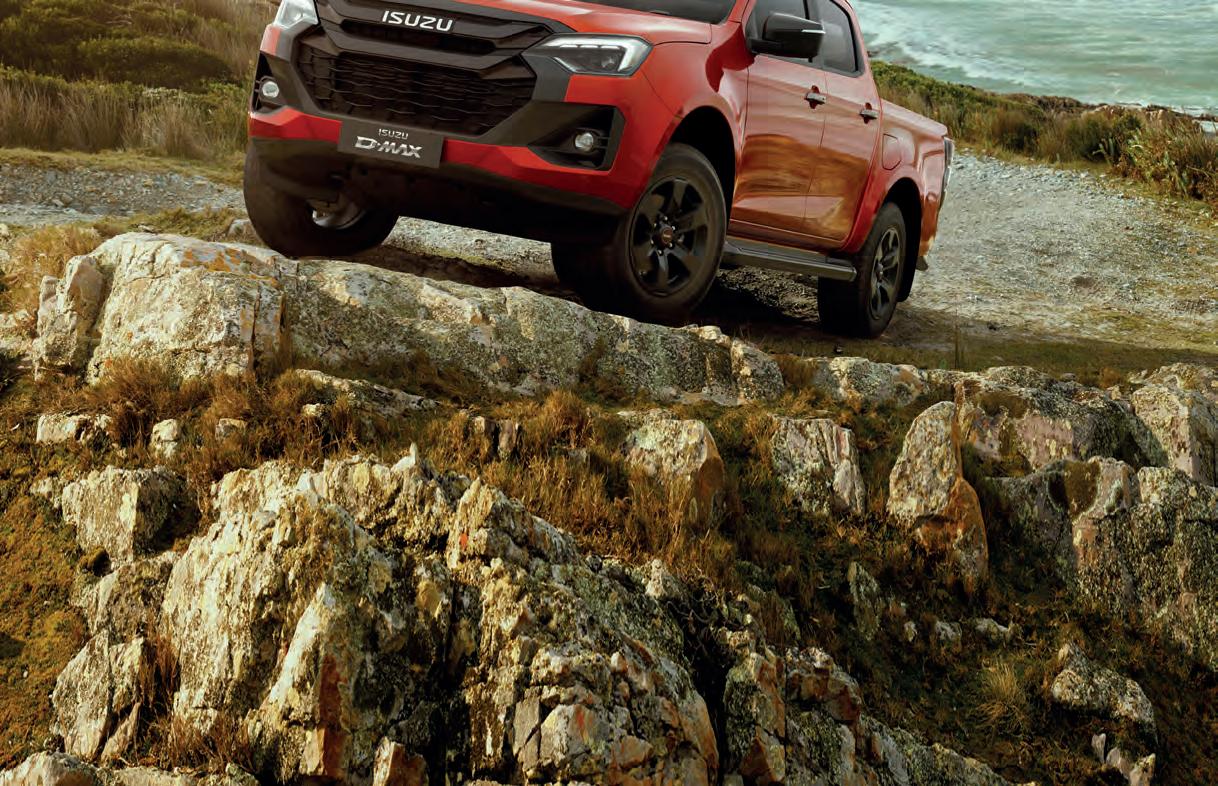





DRIVEN KGM ACTYON: Huge spec and monster value from Korea’s 4x4 specialist















DRIVEN KGM ACTYON: Huge spec and monster value from Korea’s 4x4 specialist










Isuzu presses the magic button to create its best off-roader yet – and there’s still time to order one before the tax man comes to spoil the fun!































Made from super strong HDPE plastic, these stackable boxes are ideal for use both inside and outside the vehicle. The rubber seal keeps them sealed against dust and water. Combine with the accessories for storage optimisation!
TF900 Small HD 670x379x314mm 626x338x236mm 50
TF901 Medium HD 799x479x380mm 755x438x295mm 97 Litre
TF902 Large HD 960x580x451mm 916x533x356mm 160 Litre 16.3kg
TF903 Webbing tool holder panel for small storage box lid
TF904 Dual storage pocket panel for small storage box lid
TF905 Webbing tool holder panel for medium storage box lid
TF906 Dual storage pocket panel for medium storage box lid
TF910 Storage bag for webbing tool holders (220x125x86mm)

TF1750R TF1750B 3.5L Flat Single Mount
TF1751R TF1751B 7.6L Flat Single Mount
TF1752R TF1752B 19L Flat Double Mount
100x217x342mm
90x343x436mm
100x343x876mm
TF1753R TF1753B 6.5L Long Double Mount 165x635x128mm
TF1757 Replacement Bar Lock Type Mount
TF1758 Replacement Triangular Lock Type Mount
TF1759 Replacement Pouring Spout, Cap & Vent
TF1760 Double Triangular Lock Type Mount for Flat Terra Cans
TF1781 Single Point Mounting Kit Suits TF1750 & TF1751
TF1782 Twin Point Mounting Kit
Suits TF1752 & TF1753 Fits to TF1781, tubular roof racks & others
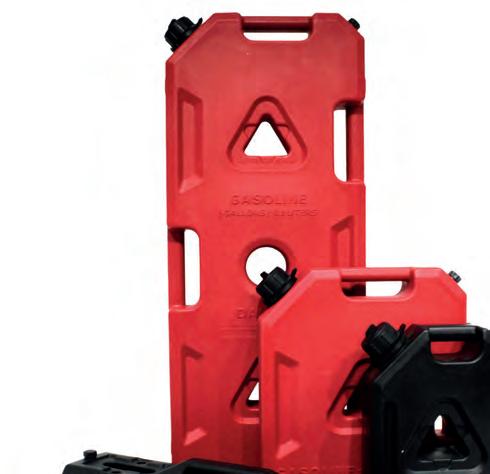



Single Triangular Lock
Single Triangular Lock
One Triangular Lock & One Triangular Screw
One Bar Lock & One Bar Screw

Defender 1983 - 200 Defender 2020 Onwards Discovery 1 & 2
Discovery 3 & 4 Spare Wheel Carriers
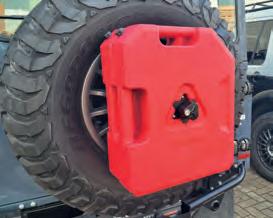
Constructed from tough LLDPE plastic, the Terra Cans are easy to carry & store. Suitable for petrol, diesel & water, making them perfect for all off-road & outdoor activities. Included is a ratchet lock cap, preventing the cap from accidentally opening. The integral pouring spout & breather vent reduce pressure and make pouring quick and easy.
> Expedition Equipment
> Underbody Protection
> Recovery Equipment
> Raised Air Intake
> Rock Sliders


Tel: 01283 742969
Email: enquiries@assignment-media.co.uk
Web: www.totaloffroad.co.uk www.4x4i.com
Online Shop: www.toronline.co.uk
Facebook: www.facebook.com/totaloffroad www.facebook.com/4x4Mag
Editor Alan Kidd
Design Ian Denby-Jones
Contributors
Graham Scott, Mike Trott, Gary Martin, Olly Sack, Gary Noskill, Dan Fenn, Paul Looe, Tom Alderney, Michael Troup
Photographers
Steve Taylor, Richard Hair, Vic Peel, Harry Hamm
Advertising Sales
Tandem Media
Tel: 01233 555735
Issy Roberts
Tel: 01233 228752 isabelle@tandemmedia.co.uk
Advertising Production
Colin Swaffer: 01233 220246
Jonathan Graham: 01233 220247
Jemma Heslop: 01233 555736
Subscriptions Agency
WW Magazines, 151 Station Street, Burton on Trent, DE14 1BG Tel: 01283 742970
Publisher and Head of Marketing
Sarah Moss
Email: sarah.moss@assignment-media.co.uk
To subscribe to 4x4, or renew a subscription, call 01283 742970. Prices for 12 issues: UK £42 (24 issues £76); Europe Airmail/ROW Surface £54; ROW Airmail £78
Distributed by Marketforce; www.marketforce.co.uk
Every effort is made to ensure the contents of 4x4 are accurate, but Assignment Media accepts no responsibility for errors or omissions nor the consequences of actions made as a result of these. When responding to any advert in 4x4, you should make appropriate enquiries before sending money or entering into a contract. The publishers take reasonable care to ensure advertisers’ probity, but will not be liable for loss or damage incurred from responding to adverts
Where a photo credit includes the note ‘CC BY 2.0’ or similar, the image is made available under that Creative Commons licence: details at www.creativecommons.org
Overlander 4x4 is published by Assignment Media Ltd, PO Box 8632, Burton on Trent DE14 9PR © Assignment Media Ltd, 2025




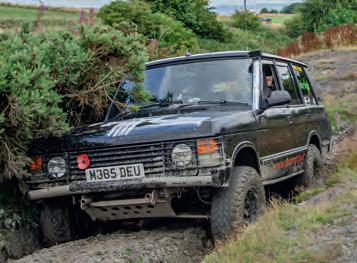
32 38 22




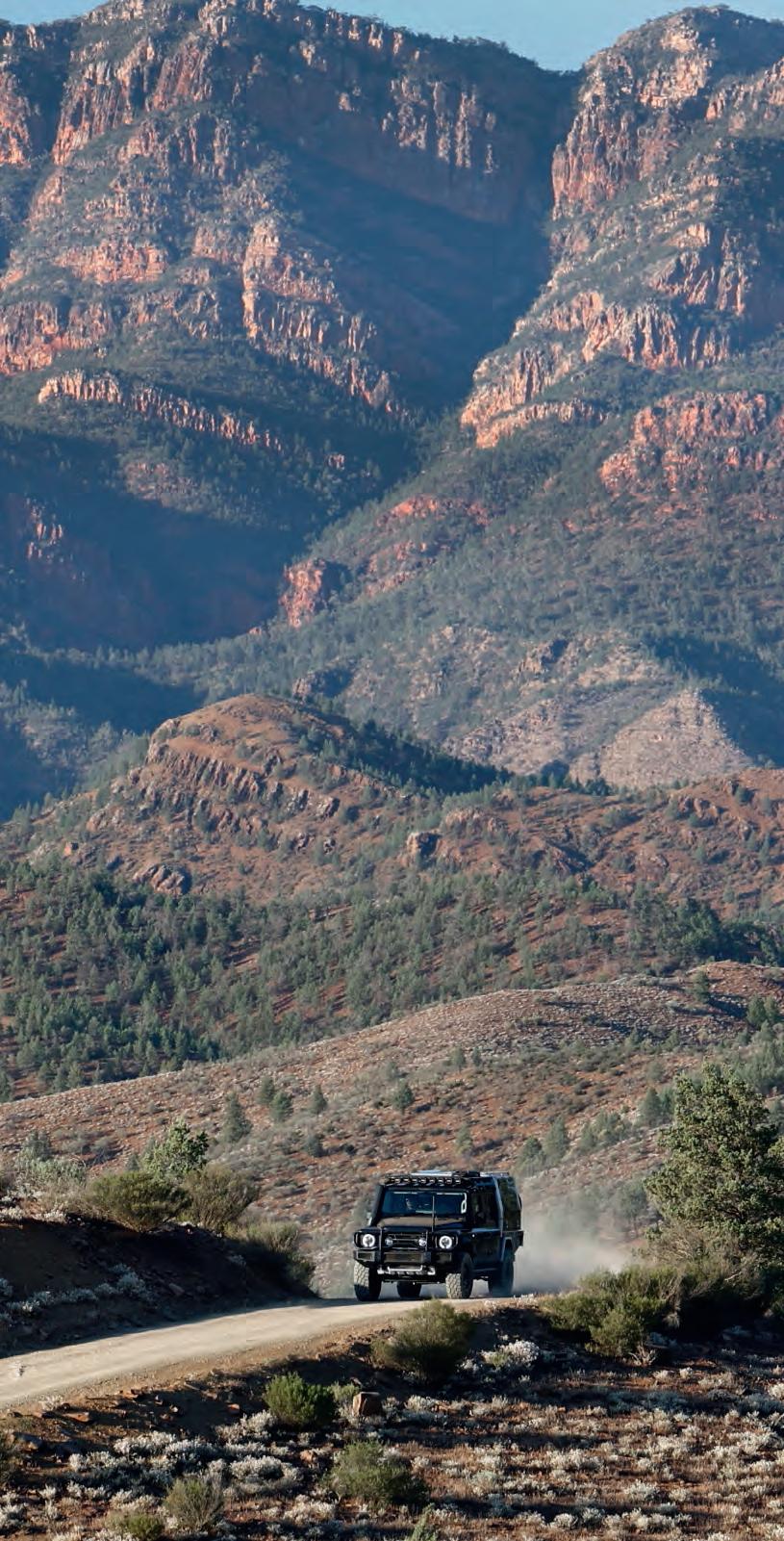















Pay quarterly by direct debit and you can get Britain’s only all-marques 4x4 magazine delivered to your door – for less than half the price on the front cover!
4 News
Stunning value for the new Dacia Bigster, a home win at the Dakar rally, more on Land Rover’s cross-country racing plans and a diversion in place on the nation’s favourite green lane
14 Products
Cool steering wheels, cool hoodies and alloys inspired by Dakar racers from the, er, sixties…
52 Subscribe
Get Overlander 4x4 delivered for a fraction of the cover price
64 Next Month
The Red Ball Express, the GMC Jimmy and the drivers who made it happen – one of the greatest stories from throughout the history of off-roading
18 Isuzu D-Max
First drive of the facelifted one-tonner, now with added in-your-face attitude, a classier cabin and more off-road ability than ever
22 KGM Actyon
It might look like the Torres, but KGM’s high-value new SUV is distict from its little brother in more than just size
26 Nissan Qashqai Tekna+ e-Power
Facelifted crossover was already good and now it’s better than ever – and worth every penny even in range-topping form
32 Ineos Quartermaster Kaiju
One-off version of the Grenadier double-cab is loaded with premium expedition kit as Ineos presents its overlanding credentials
38 Disco or Range Rover?
When you’ve got one vehicle with a rotten body and another that won’t run, and the bloke next door has a telehandler, what could make more sense…

48 Desert Mission
An unusual kind of expedition – one aimed at giving the gifts of sight and reading to children a million miles from anywhere, as a huge convoy of Hyundais heads deep into Morocco
54 At Home in Africa
The Land Rover 130 motorhome we profiled last month gets its maiden voyage on an expedition to Namibia and Botswana




Dacia has revealed prices for the Bigster, its new SUV that will slot in above the hugely popular Duster in its growing 4x4 range. The eagerly anticipated new C-segment vehicle will start at £24,995 on-the-road, with 4x4 versions coming in at £27,195.
Due to go on sale in the spring, with pre-orders being taken now, the Bigster offers a choice of three powertrains.
These include the TCe 130, a 1.2-litre turbocharged three-cylinder petrol engine running a 48V mild hybrid system, whose 130bhp at 4500rpm and 170lbf.ft at 2250rpm goes to all four wheels via a six-speed manual gearbox. This is the only option in the range with all-wheel drive; the same engine is also available tuned for 140bp at 5500rpm and 170lbf.ft at 2100rpm but only driving the front wheels, as does the all-new hybrid 155, a petrolelectric unit mated to an automatic box.
As always with Dacia, value for money is a huge selling point – and like the Duster, the Bigster will offer a strong kit list for your money. There are three trim levels, again mimicking the Duster line-up, with an entry-level Expression model and two parallel range-toppers called Extreme
and Journey offering a choice of enhanced ruggedness or luxury.
All models come with keyless entry, dual-zone climate, alloys, front and rear parking sensors, Multiview camera, auto wipers, Hill Start Assist and intelligent cruise control with speed limiter. You also get four YouClip attachment points for securing accessories, while standard equipment also includes all the usual safety kit. A 10.1” central touchscreen runs a multimedia system with four speakers and wireless connectivity for Apple CarPlay and Android Auto, while a 40 / 20 / 40 split rear bench promises easy fold functionality.
The rims are 17” in diameter on Expression models, while Extreme and Journey get 18” and 19” semi diamond cut alloys respectively. Both top trim levels also add a heated steering wheel, heated front seats, wireless phone charging, high beam assist, heated and electronically adjustable door mirrors and rear window privacy glass. In addition, on these two models a range of six paint colours (black, green, grey, terracotta, white and an exclusive-to-Bigster shade of blue) can be optioned with a contrasting black roof.



On top of this, Extreme models feature a panoramic sunroof, modular roof bars, washable MicroCloud TEP upholstery and rubber mats as standard. As well as the bigger alloys, Journey trim trades these for bespoke upholstery, front passenger seat lumbar support and a powered tailgate; it’s priced at £800 more than the Extreme.
Talking of prices, the £24,995 headline figure is for a TCe 140 Expression.
The TCe 130 4x4 version of this model is £27,195, with the same drivetrain costing £28,695 in Extreme form. Oddly, Expression and Extreme models are both available with all three drivetrains, but the TCe 130 4x4 is not offered in Journey trim.
Whichever model you go for, the Bigster is a bargain alternative to the similarly sized Nissan X-Trail – whose Renault Nissan Alliance background it shares. The X-Trail’s premium technology is not there, however there’s precious little with which to compare it at the price. The new Duster was an instant hit when it was launched last year – and with a returnable deposit of £250 being all it takes to pre-order one, Dacia can exepct this larger model to attract even more attention as its on-sale date approaches.

The original Minilite wheel, was probably the most successful competition wheel of the 1960’s and 70’s. As the name suggests, it was originally developed as a magnesium competition wheel for the then revolutionary new Austin ‘Mini’, but its instant success meant that it was soon to be seen on many of the serious race and rally cars of that era. A new iconic style was born, and to this day, all genuine Minilite wheels are made to that original classic design. Originally conceived for race and rally, demand soon grew for road car applications, and has remained so ever since. Minilite wheels are ‘Low-Pressure’ die cast, in high grade aluminium alloy; machined on the latest CNC equipment, 100% pressure tested, and finally powder coated for maximum protection against the elements.


> Load Rating: 1,220kg
> Offset: ET0
> PCD: 5 x 165.1
> Weight: 11.7kg
> Test Standard: JWL





LAND ROVER HAS CONFIRMED that its entry in the 2026 Dakar rally will use vehicles derived from the Defender Octa. The high-performance halo model at the top of the Defender range, which is powered by a 4.4-litre V8 engine and costs from £145,300 in the UK, will compete in a revamped version of the Dakar’s Stock class which this year had only one finisher.
The Defender works team, whose campaign is being masterminded by Prodrive, will also take part in the 2026 FIA World Rally Raid Championship (W2RC), of which the Dakar is part. In response to the growing popularity of high-powered 4x4s and SUVs, the FIA has introduced new regulations for vehicles in the Stock class, for production-based vehicles, which allow increased performance. In Land Rover’s words, this makes it an ideal way to ‘authentically demonstrate Defender’s extreme durability and capability.’
Two Defenders will run in all five rounds of the W2RC, with a third joining them for the Dakar. Drivers are yet to be announced, however with the top names in desert racing routinely switching allegiance as manufacturers come and go, Land Rover
will inevitably be in discussion with a number of leading lights.
While the 635bhp produced by the Octa’s twin-turbo V8 will give it ample performance on the Saudi dunes, and indeed everywhere else, success in the fortnightlong Dakar is all about endurance. ‘Unstoppable all-terrain capability and strength are at the core of every Defender and these attributes are essential for any rally-raid competition vehicle,’ says Land Rover – as of course is the ability to cover thousands of punishing stage miles without breaking.
To quality for the Stock class, whose regulations were drafted with input from the 4x4 industry, the team’s Defenders will use the same D7x body architecture, transmission and driveline layout as the production model. A version of the platform used on the Discovery, D7x is a lightweight aluminium monocoque providing high torsional rigidity and three times more strength than traditional ‘body-on-frame’ designs. All Defenders use this, however the Octa is set up with bespoke geometry to allow greater dynamic ability at speed.
‘Taking on the most demanding rally-raid event in the world represents
the ultimate test of our most extreme Defender to date,’ says Defender boss Mark Cameron. ‘We know that Dakar will be an immense challenge, but Defender Octa combines huge performance with characteristic Defender capability and durability – the perfect foundations for what I’m confident will be a highly competitive rally-raid vehicle.’
‘Defender competing in Dakar will be an incredibly exciting challenge,’ added JLR Motorsport boss James Barclay. ‘We had a vision for the future of production-based vehicles in rally-raid so it has been incredibly positive to align with the ASO, FIA and other manufacturers and work collaboratively to create the new regulations for the Stock category.
‘We now have the right platform to authentically demonstrate Defender’s capability in the biggest challenge in off-road motorsport. Ahead of us is a year of detailed preparation, testing and learning to be ready for Dakar 2026. The team are already well underway and we are very much looking forward to competing in both Dakar and W2RC – the world’s toughest off-road events.’


























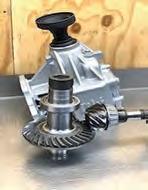

Words: Olly Sack Pic: A.S.O./F.Gooden/DPPI
Yazeed Al Rajhi became the first Saudi Arabian to win the Dakar Rally, triumphing in his Toyota Hilux after a 7828-kilometre marathon in the deserts of his home country. In an event that saw 12 stages won by a total of 10 different drivers, the 47th running of the rally also saw strong finishes for a variety of manufacturers, with Ford and Dacia joining Toyota in the top five.
The rally was also one of the closest, with just three minutes and 57 seconds separating Al Rajhi from second-placed Henk Lategan. The Swedish pairing of Mattias Ekström and Emil Bergkvist finished third in their Ford Raptor, 20’21” behind the winner, with Nasser Al-Attiyah around three and a half minutes further back in fourth aboard the new Dacia Sandrider. Compare that with the 1 hour, 52 minutes and 12 seconds by which Hiroshi Masuoka won it in 2003.
Al Rajhi was the third driver to hold the overall lead during the course of the rally – with all of them being in Toyotas. American prodigy Seth Quintero took the top step on the podium at the end of day one, but after that it was Lategan who moved to the head of the queue – a position he then held for an entire week. The South African was never able to
establish a comfortable gap ahead of the chasing pack, however – and when he was beset by a combination of punctures and navigational errors while on Stage 9, a 357-kilometre monster between Riyadh and Haradh, Al Rajhi made his move.
The stage was won by Al-Attiyah, a first ever for Dacia and a record-equalling 50th for the Qatari veteran, with Belgium’s Guillaume de Mévius behind him in his Mini. But it was the Saudi’s third place on the day that lifted him into the lead.
Letagan was not finished, however, and came back on Stage 10 to squeeze ahead of his rival in what had long since become a two-way battle for victory. Nonetheless, neither appeared in the top three on the day, with Nani Roma dominating the dunes of the fabled Empty Quarter to give the Ford Raptor its first stage win. Starting at the head of the pack is a huge disadvantage in these conditions, and the 2014 champion took advantage of a lowly position on the road to record the 26th stage win of his career.
This was a short stage by the Dakar’s standards, however it could have proved decisive when Al Rajhi got stuck in the sand. Thankfully for the local man, he managed to get out quickly enough to stay in contention – and the following day, after a start that was delayed by fog,
he came back with a stellar run over 276 kilometres of dunes and dry lake beds to establish a lead of just over six minutes. It was the perfect time to take command, with just one stage remaining – the traditional short loop, this year starting and finishing in Shubaytah, on which Al Rajhi cruised home to confirm his place as the 2025 Dakar champion. Al Rajhi and co-driver Timo Gottschalk were joined on the top step by Czechia’s Martin Macík, František Tomášek and David Švanda in the trucks category, the American team of Brock Heger and Max Eddy aboard a Polaris RZR in the SSVs and Argentinian husband-and-wife pairing of Nicolás Cavigliasso and Valentina Pertegarini in the T3 Challenger class.
There were also two significant results for the future of the Dakar. Spain’s Jordi Juvanteny, Jose Luis Criado and Xavier Ribas won the Mission 1000 event for vehicles running on alternative fuels. And a sparsely populated Stock class for standard vehicles saw a default victory for Akira Miura and Jean Michel Polato in their Land Cruiser – however next year it will be a very different story, with the arrival of a works entry from new Dakar sponsor Land Rover propelling the class firmly into the mainstream as a new chapter in the Dakar’s history begins.









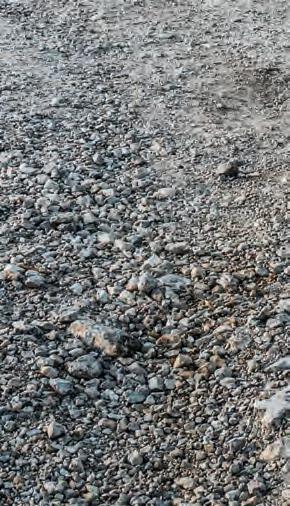


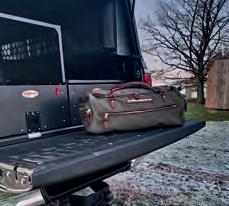


• Escape Gear
• ...and many more!
• Aluminium canopies
• Roof tents and roof racks




• Off-road fridges and 12v gear
• Drawer systems and slides














• Bumpers, side steps and vehicle protection
• Campsite essentials, tables and chairs

















Volunteers with Norfolk and Suffolk 4x4 Response have a new tool at their disposal to press into action in the fight against flooding. FloodSax are resemble large pillowcases before they are immersed in water – whereupon a special gelling polymer inside them absorbs the water and retains it, expanding to create an instant sandless sandbag.
Vacuum-packed in bags of five, the bags are space-saving and lightweight to transport. This means that if flooding is imminent, the organisation’s 60-strong team can get them quickly to the scene to protect homes and businesses.
Part of the national network of response organisations, whose 30-plus groups contain around 3000 members, Norfolk and Suffolk 4x4 Response dealt with more than 400 callouts during 2024 – with volunteers driving around 20,000 miles on urgent missions to assist others. Its average response time is just 37 minutes and its fastest a mere 11 minutes. Compare that to the national average of 16.5 minutes it takes for the police to turn up to a life-threatening emergency and you can see that East Anglia’s 4x4 owners are doing a pretty good job.
This response time is even more impressive given that the responders typically deal with call-outs to people who are stuck and needing help while in remote locations which are inaccessible to other vehicles.
‘Flooding has been a real issue this year and will continue to be in the future, which is why it’s so important we are prepared for it,’ said Events co-ordinator Rob Hawley. ‘We had a call from a couple of nurses recently after their car conked out in a huge puddle.
‘It would have taken hours to get them recovered and the vehicle pulled clear of the water but we were there within an hour. When it rains in Norfolk and Suffolk, many back roads become impassable.’
The nature of the landscape in these counties also means that floodwater can rise incredibly quickly after heavy rain. When Storm Babet struck in October 2023, for example, a ford in the Suffolk village of Debenham, ten miles north of Ipswich, rapidly rose from less than 10 inches in depth to more than seven feet. ‘I’d never seen it more than a foot deep before,’ said Rob. ‘It flooded several nearby properties.’
These are the kind of situations in which FloodSax will allow volunteers to
make a critical difference before it’s too late. ‘The FloodSax are space-saving to store and so lightweight to transport we can just chuck a box or two each containing 20 in the back and away we go,’ confirmed Rob.
‘I was with a similar response organisation in the past which tried to take old-style sandbags out to people during emergencies. But it required so much manpower to lift them and transport them anywhere and we needed trailers hitched to our vehicles. Then the trailers are so heavy they were likely to sink in any mud too.
‘The FloodSax are also so easy to energise in water. We did an exercise day to test them out and even my three-yearold granddaughter could do it!’
Norfolk and Suffolk 4x4 Response’s remit is to preserve and protect human life and property by providing equipment, vehicles and other resources to offer support in adverse conditions. ‘Some days we can be transporting critical NHS staff or medical supplies in the snow or maybe helping transport firefighters to coastal flooding areas,’ said Rob. ‘Other days you might find us in the thick of a remote forest, keeping an eye on charity fundraisers to make sure they’re safe, or patrolling an event with a paramedic in the passenger seat ready to respond to any emergency.
‘More commonly, you’ll see us providing assistance to Lowland Search and Rescue by transporting search teams or dog teams. And when things go wrong, you may also find us in the middle of a muddy field helping to recover vehicles after a downpour during a summer fete.’
Flooding is becoming ever more commonplace in the UK, and is growing to take up an increasing amount of response networks’ time. With FloodSax at their disposal, those networks and their heroic volunteers will at least be able to use that time as efficiently as possible to help those most at risk.
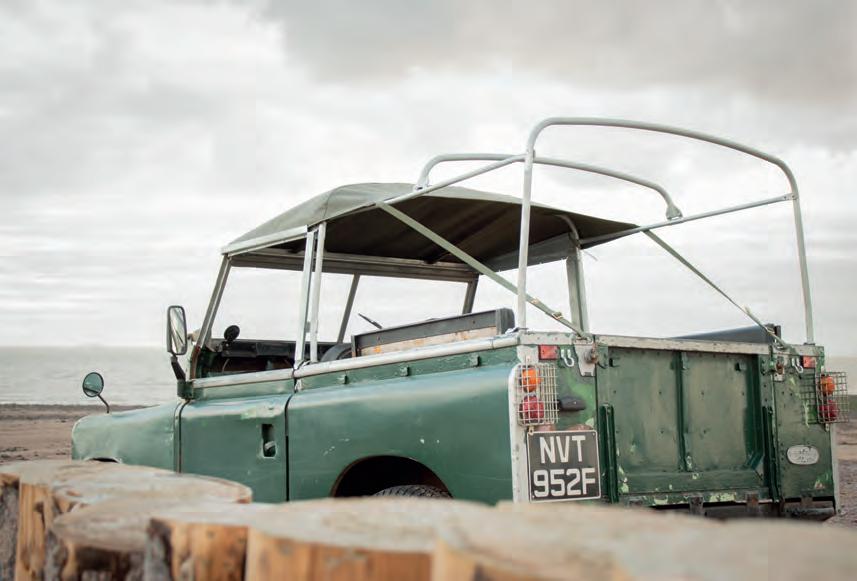




















Heritage Leather Rim Steering Wheel




Product Code: HER-WH-04
6061 Billet Aluminium




Black Leather Rim
Black Anodised Body 48 & 36 Spine Boss’s Kits




Heritage Wood Rim Steering Wheel
Product Code: HER-WH-01
6061 Billet Aluminium
Beech Wood Rim
Bikini Hoods o er a stylish alternative to the full hood providing protection from the elements whilst o ering an almost open top driving experience. The Bikini hood can be removed and put on in under a minute, a fuss free alternative so you can enjoy driving your Land Rover ‘Hood Free’ but still having the reassurance of adequate protection from showers and sun.
+P&P
(Including Boss Kit)
Heritage 1948 is dedicated to producing a range of outstanding quality canvas hoods for Series Land Rovers. Unlike some of our competitors, all of our Land Rover hoods are handmade in our Somerset factory from superior quality ‘Moorland’ canvas









Our handmade hoods are inherently more accurate than machine produced counterparts allowing for an enhanced t and exceptional quality control.
Heritage 1948 has taken great care to ensure all our Land Rover hoods have an enhanced life span and are all nished with period correct solid brass ttings.
Mirror nished Body
48 & 36 Spine Boss’s Kits


+P&P
(Including Boss Kit)







Heritage 1948 supply a Superior Quality Range of British Made Hood Sticks Sets and Component Parts to t many variations of Land Rover Hoods.









THE GREEN LANE ASSOCIATION IS ADVISING ALL USERS OF STRATA
FLORIDA to avoid a section of the iconic Welsh mountain lane until repairs have been carried out to remedy two large, muddy holes which have appeared close to the route. A diversion is in place via the forestry track which runs alongside the right of way.
The part of the lane in question has long contained a series of axle-twisters which routinely push even originalshape Defenders to the extremes of their suspension travel. The holes which have appeared are not on the legal route, however even this is now in a condition which is likely to cause many vehicles to struggle – potentially worsening the condition of the surface, which could lead to the lane being closed.
GLASS is therefore advising all drivers, and in particular those of standard vehicles, to use the diversion route. Powys Rep Tristan Craddock has informed the local police of this, so vehicles using the detour should not be disturbed – so long of course as their drivers are following the same rules that apply across the entire green lane network.
Talking of the police, there has been a visible presence in the area recently in response to reports of illegal riders and

drivers using vans to bring vehicles into the surrounding forest. This of course is straightforward criminality and should not be confused with green lane use, however an engine and four wheels is enough in some people’s minds. All legal rights of way users will support the police in their efforts to stamp this out – though a by-product of the action is that there are more eyes and ears than normal focused

on you when you use the Ceredigion end of the lane.
Tristan is working with the police, the local authority and Natural Resources Wales in a bid to find solutions both to the illegal driving and the damage near the lane itself. ‘As always,’ he says, ‘making progress is slow going.’ But also as always, without GLASS there would be no progress at all.

The recommended diversion, which is shown in red on the map above, runs alongside a section of the right of way (in blue) which skirts a steep drop-off and is known for its axle-twisters (left). Two large holes have appeared next to the line of the route, which itself is now becoming vulnerable to further damage – hence the request to avoid it. The diversion follows the forestry track; when travelling from west to east, you finally regain the right of way where it drops off to the left at the point marked Bwlch on the map (right)
































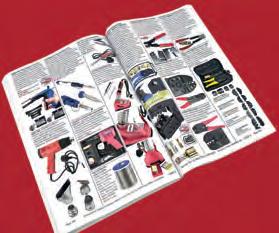
























A classy steering wheel for any kind of proper Land Rover
£258 (£298 with boss) www.heritage1948.co.uk
THE WORLD OF LAND ROVERS TENDS TO SPLIT ITSELF INTO THOSE THAT ARE KEPT TO BE USED AND THOSE THAT ARE KEPT TO BE LOOKED AT. If you’re in the former group, you probably don’t have much time for the latter.
There are a few items, however, that belong perfectly on every kind of truck. Good seats are one (they don’t have to be wrapped in soft leather and embvroidered with the logo of your favourite couture brand, but wanting to be able to walk normally when you climb out at the end of a journey is something we can all relate to) and a really nice steering wheel is another. The bits you touch, basically – you certainly don’t have to be a show-off to appreciate that.
There’s a world in which ‘a really nice steering wheel’ is simply one that’s not been eaten by a dog. In that case, the Hindon 15” Wood Rim by Heritage 1948 is a really, really nice steering wheel.
This has a satin black anodised body forged from 6061 billet aluminium. Around the spokes is wrapped a crafted beechwood rim finished off with nine polished structural metal rivets. It has a nine-hole, 101mm PCD fitment and comes with a choice of 36 or 48-spline boss to suit whatever the factory was using that day.

A steering wheel guaranteed to improve the interior of any Land Rover Series or Defender,’ says Heritage 1948, which knows a thing or two about doing exactly

that. ‘It has been developed around the classic spirit of the Land Rover and continues our uncompromising commitment to quality aftermarket parts.’
‘OFF-ROAD EXCELLENCE REDEFINED.’ That’s what Kahn and Chelsea Truck Company says of their new Hammerhead RS-Forged light alloy wheel, ‘a triumph of engineering that blends rugged performance with refined design’ which ‘elevates not only the look but also the capability of every vehicle it’s paired with.’
Available in 20” and, coming later this year, 22” diameters, the wheel is rated to 1250kg and, says Kahn, is built to perform in the most extreme conditions and demanding terrains. ‘Whether you’re powering through tough trails or cruising motorways, this wheel is engineered to tackle the roughest conditions with ease. It’s a perfect match for vehicles like the Ineos Grenadier, Land Rover Defender (they’re
£44.00 | stitchandrivet.co.uk
IF YOU’VE FINALLY RUN OUT OF THINGS TO BUY FOR YOUR VEHICLE, maybe that’s nature’s way of telling you to buy something for yourself now. In which case, what could be better than a hoodie with anything you want on it? Like a picture of your truck, obviously. Enter stage left Stitch and Rivet, whose premium hoodies are available in all the usual sizes and a choice of four colours. But that’s just the beginning. Having chosen those things, you’re then into a vast array of embroidered badge options covering more Land Rovers than you know what to do with (Series, Defender, Discovery 1 and new 110) plus your choice of body, roof, rim and mudguard colours.
The hoodies themselves are made from 85% organic combed cotton and 15% recycled polyester, and come with a double-layered hood and front kangaroo pouch. The hems are ribbed and the draw cords are finished with metal tips. They’re suitable for vegans, too, and certified by both the Fairwear Foundation and Oeko-Tex.
Not into Land Rovers? Not a problem. If the company’s premade options don’t float your boat, give them a shout and they’ll talk to you about doing something bespoke.
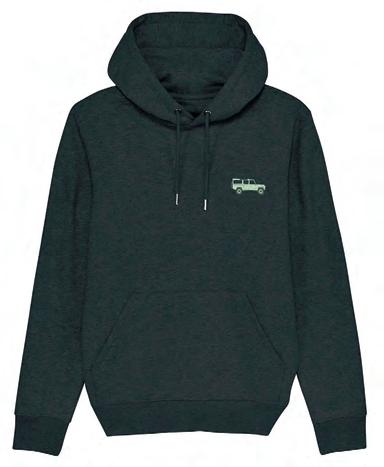
talking about the new-shape one) and a range of capable 4x4s, SUVs and vans.’
‘The Hammerhead wheel is the result of over two years of precise engineering, design refinement and expert craftsmanship,’ continues Kahn. ‘Under the direction of Chief Designer Afzal Kahn, the design team meticulously honed every detail to deliver a wheel that combines elegance with unparalleled performance.’
They go on to say that the Hammerhead ‘draws inspiration from the iconic wheels that have graced Dakar Rally vehicles since the 1960s,’ so that’ll be one detail they didn’t hone very meticulously. They look cool, though, so don’t let’s split hairs over a mere decade.









































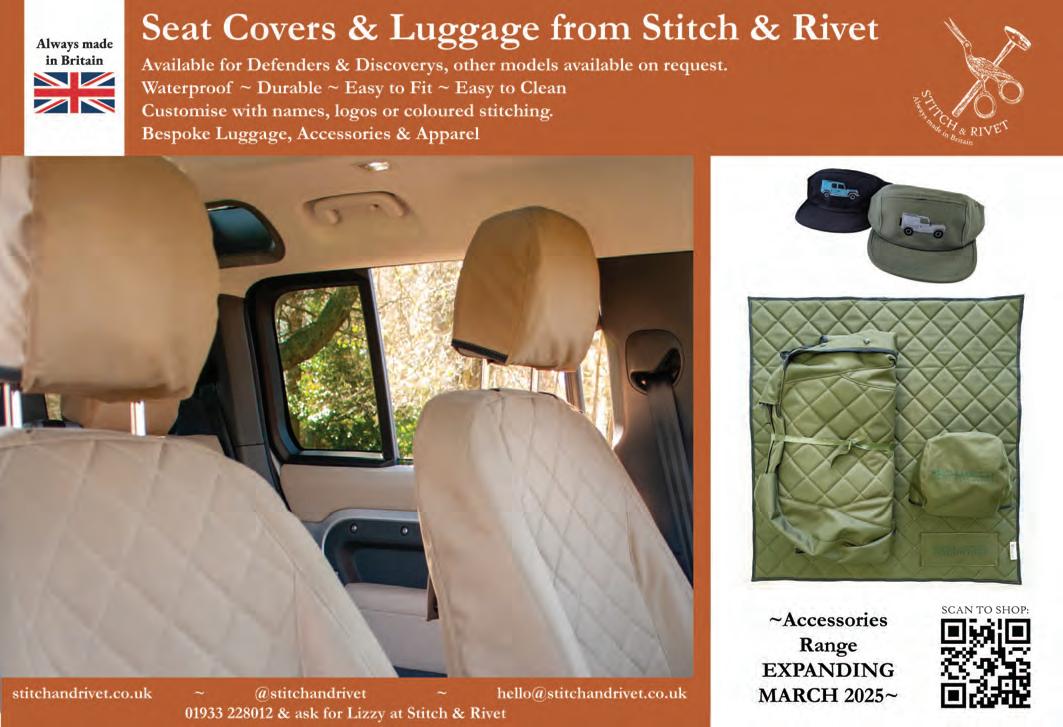











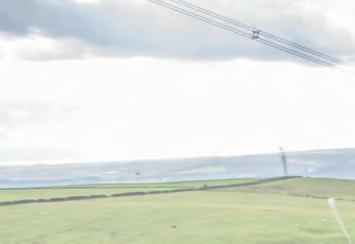





























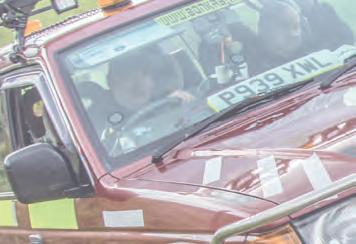












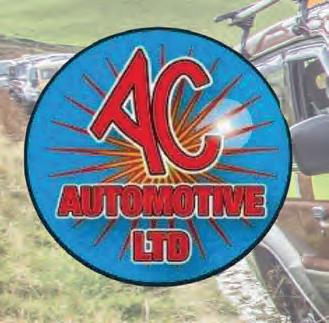















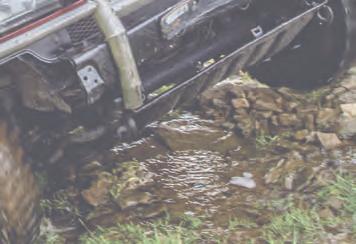




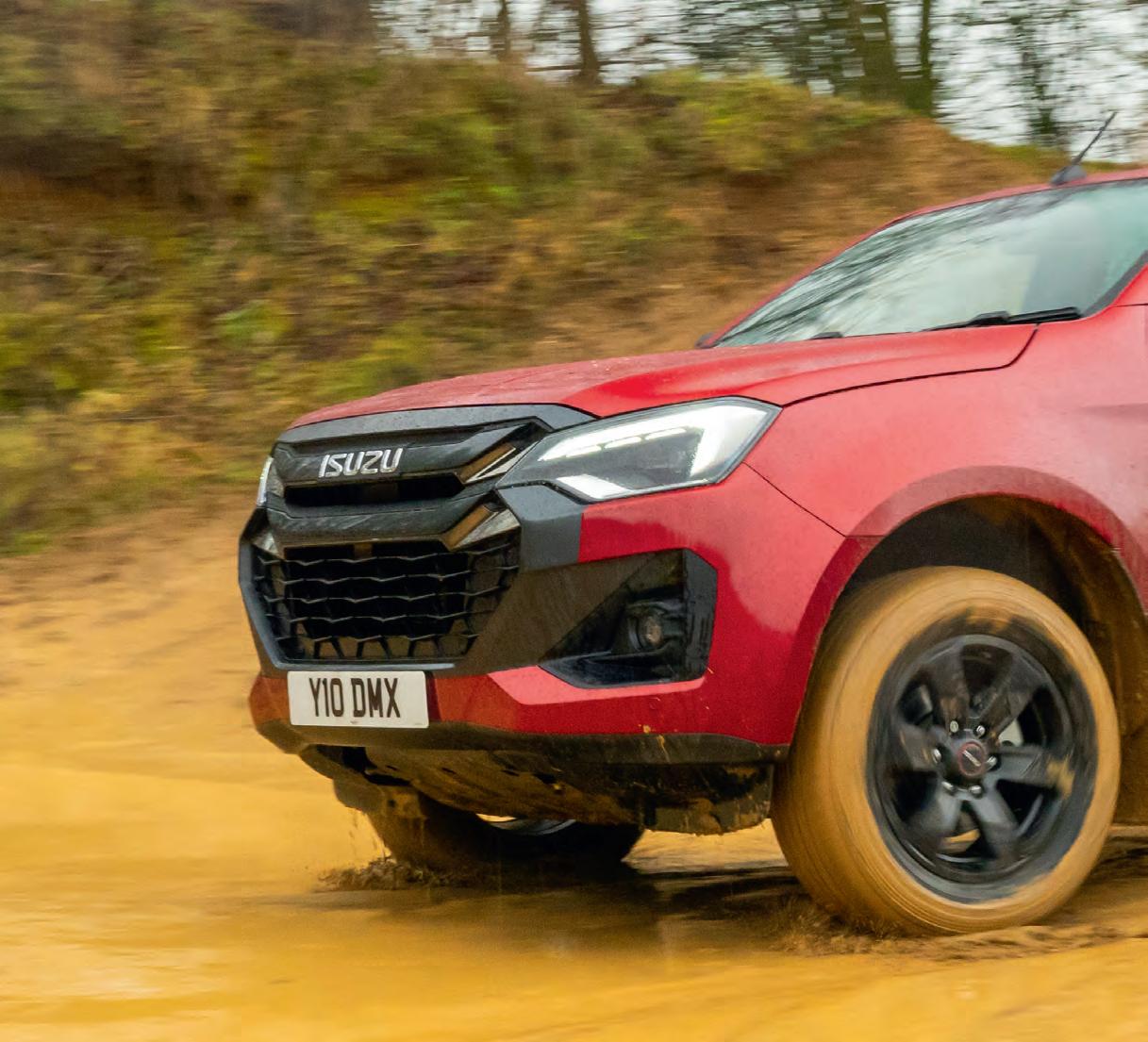
Isuzu could never be accused of letting the glass grow under its feet. The D-Max only came to Britain in the spring of 2021 and here we are, just under four years later, looking at the first major facelift. And we have to say ‘major’ because there’s already been a minor one.
Truth to tell, ‘facelift’ is not really the right word. Yes, the D-Max has been given a new look, but the changes run deeper than that. It’s not all-new, but it certainly is new enough to make a difference.
Let’s get to its looks first. The grille, which was never exactly shy and retiring, is now more in-your-face than ever – it reminds us a bit of the XTR edition Isuzu did of the previous-generation D-Max, which
was arguably the most capable pick-up on the market at the time. Above it, the bonnet has been reshaped to include what could loosely be described as a power bulge (there’s no actual power difference compared to the previous version, though as always the dealer can do something about that post-registration). At the back, meanwhile, the tailgate gets a new look and the lights to either side of it have a new triple-shield design which looks cooler than that makes them sound.
Of course, no facelift would be complete without new designs of alloy wheel and an extra colour to choose. Actually, it’s a replacement colour, and it’s one shade of orange replacing another, and it’s exclusive
to the range-topping V-Cross, but it looks good so what the hell.
Talking of colours, there’s a basic commercial vehicle white if that’s enough for you, plus seven other shades which all add £600 plus VAT to the ticket. Which now starts at £29,995 for the 4x4 Utility SingleCab and climbs to £39,995 for the V-Cross Double-Cab Auto. The bad news is that that’s before VAT, with which you’re looking at £35,916 to £47,916. Plus paint, of course.
All this comes at a time when the double-cab market is about to be convulsed by the new BIK tax regime, which means you can’t get one as a company vehicle any more without paying tax like it was an everyday car. A few people will still do

it, simply because a pick-up is what suits them best, and of course private buyers and fleet operators will be unaffected, but if you previously had a double-cab as a tax dodge the gravy train is going to hit the buffers on 6 April. Single-Cab and Extended-Cab vehicles are exempt from this, but of course they’re a fat lot of good as family motors and for now at least, you can only get them in lower-spec form so the appeal of slipping the tax man that way instead will remain limited to say the least.
Having said that, even in Utility form the D-Max is not stingy. You get front fogs, auto headlights and wipers, air-con, cruise control, a new multimedia system with Bluetooth, DAB and wireless phone pairing,
USB charging sockets and a reversing camera. The Utility model also has a locking rear diff as standard these days.
Move up to the DL20 and you add alloys, rear parking sensors, more speakers, heated seats and carpets instead of rubber flooring. This model too is available in Extended-Cab form, so if you don’t need the rear seats but you do still want to stick it up The Man that’s a very acceptable kit list. Indeed, while the DL40 and V-Cross do add more besides, styling apart it could certainly be argued that the lower end of the range is 90% of the way there.
Anyway, that was always the case and we’re here to look at what’s new, so let’s go back a couple of paragraphs to that


multimedia system. We know from talking to D-Max owners that this is one of the few areas in which they wish their trucks were better, and the people from Isuzu have obviously been talking to them too because they’ve done something about it.
The new system in Utility, DL20 and DL40 models closely resembles the one which was already used in the V-Cross. This in turn has been upgraded, so you’re still getting something more for your money at the top of the range, but all models are now firmly in the modern age. The aforementioned Bluetooth and DAB are good but it’s Apple CarPlay and Android Auto that make the big difference. An increasing number of drivers now just use their phone for everything, so a vehicle that mirrors it reliably is crucial – and as well as being tidier, doing it wirelessly means it’ll keep on working as the phone gets older and the socket in the bottom of it stops working the way they do.
With an 8” screen, the new system is effective if not exactly enormous to look at, but it’s easily navigated and responds promptly when you touch the screen. If you’re the kind of person who needs another inch in their life, the V-Cross upgrades you to a 9” display with a couple of extra in-screen buttons, and also gives you another USB outlet up front.
We mentioned speakers earlier on, and in a nicely symmetrical pattern as you climb the range through Utility, DL20, DL40 and V-Cross the number you get goes 2, 4, 6, 8. If they ever bring in a model above the
V-Cross, they’ll have to invent a number called Motorway.
If you understand that reference, isn’t it fun being old?
Something else you get in the V-Cross, and also the DL40, is a very smart 7” virtual dash display. Centred around the speedo, this looks really sharp and eye-catching – a huge improvement over the old-school clocks and 4.2” info screen in the Utility and DL20. It’s not in deal-maker territory, perhaps, but it’ll certainly put a tick in the reasons-to-spend-more-money column when you’re deciding which model to buy. Another would be if you like electric seats, which are standard (along with leather trim) on the DL40 and V-Cross. We tend to see both as reasons to buy a Utility or DL20 instead, not least because adjustable lumbar support (which matters far more than either of these things) is standard throughout the range, but each to their own. Isuzu says the front seat design has been revised for greater comfort and reduced fatigue, and we certainly weren’t feeling the effects after a couple of hours behind the wheel.
These included an entertaining variety of A and B-roads, a bit of around-town work, some shockingly surfaced country lanes and a particularly intense off-road session. The latter was interesting because it showed off the D-Max’s big new trick –a selectable Rough Terrain Mode which modulates the brakes and throttle to mimic the effect of true four-wheel drive.
If you’re a 4x4 traditionalist, you’ll believe that a vehicle with low range, a manual
gearbox and a rear locker shouldn’t need any electronic tricks to help it get about off-road. The D-Max has all these things, and we can’t say that with a set of mud tyres on its rims the one we drove wouldn’t have strolled over the terrain we tackled. However, we have a D-Max as a project vehicle which ticks all those boxes and we’d have thought twice about trying some of it. If you’re familiar with Avalanche Adventure in Sibbertoft, you’ll know what it’s like – the quarry section there has some very steep hills and the sort of surface you can barely stand up on when it’s wet, which it was on the day of the launch event, so the trucks had their work cut out.
They were shod with standard tyres, too. And while this is hardly the most scientific assessment in the world, we made it up one particular hill I thought we had no right at all to conquer. The instructor guy next to me didn’t think we had any right to conquer it either, evidently, because it turned out I’d misheard his directions and we were meant to go up the gentler one next to it but hey ho, we made it. The secret, he told me (quite forcefully, as we approached the top of the hill and I instinctively trod on the gas to keep it moving), is to keep the engine spinning at between 2000 and 2500rpm so the system can do its thing.
We went down a couple of similarly steep hills without any sign of wheel slip at all. Again, you might reasonably expect a truck with low range and a manual box to be able to do this without any modern

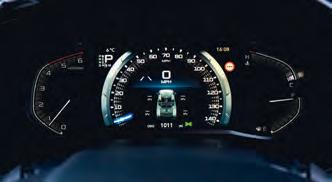
Updated interior features more comfortable seats, a much-improved multimedia offering and on DL40 and V-Cross models, an excellent digital dash display
driver aids, but Hill Descent Control is standard on all 4x4 versions of the D-Max and while there was no tangible sign of it kicking in there was also no tangible sign of any tobogganing at all. Which is definitely relevant on surfaces like this, especially when you’re on road tyres.
Interestingly, you don’t have to be off-road at all to use the Rough Terrain Mode button. Isuzu has a table showing you what the truck can tackle with and without it. When you’re in 2H, that’s for roads and gravel; engage Rough Terrain Mode for wet unpaved roads. Moving to
4H, you’re on snow and ice, muddy roads and shallow sand; press the button for deep snow, deserts, deep mud and rock. Dropping it into 4L is for off-road conditions that are challenging or, in Rough Terrain Mode, extreme.
You can decide for yourself what kind of rock they’re talking about if you can drive it in high range, but while it’s always easy to poke fun at things like this it’s a useful indication of what the magic button is there to offer. It’s not meant to make a silk purse out of a sow’s ear: rather, its purpose is to make the D-Max better at what it’s already good at. We didn’t lock the rear diff during our session, but Isuzu says it can be used in conjunction with Rough Terrain Mode for ‘very extreme conditions.’
From the current generation’s initial launch, when Utility models didn’t have the rear locker available at all, to now when both it and Rough Terrain Mode are standard across the range, the D-Max has taken a significant step forward in off-road terms. Given that what’s left of the traditional off-road market for station wagons like the Defender now costs so much money you’d have to be dripping in cash to buy one at all, let alone risk getting it scratched or muddy, and the pick-up market’s ever firmer focus on lifestyle variants, it could quite reasonably be argued that the D-Max is now the off-roader for everyman. The fact
that you don’t have to spend your wads on leather and fancy trim just to get the offroad hardware you need is not entirely new but it certainly is very refreshing indeed.
The same can be said of the very comprehensive safety package offered as standard on every D-Max, which puts another big tick in the single-status box. The new model gets various new and improved equipment here including improved autonomous emergency braking, intelligent adaptive cruise control and a much wider field of vision and improved hazard perception for the stereo camera system, which can also now recognise a number of additional traffic signs. As always, a good, high driving position is the best safety system of all, and as always the D-Max allows you to survey the road around you from a suitably lofty perch.
Of course, this will get loftier yet when the lifted, big-tyred AT35 model comes out. Even the standard D-Max is still a dominant presence on the road, though, and one you can drive in all conditions with the greatest of confidence.
So, the order book is open but the BIK tax break is going to be pulled in early April. Time to get your order in for a new D-Max as your next company car? Well, everything points to it being the best yet. The gravy train is about to hit the buffers – but Isuzu is going full steam ahead.






Since changing its name from SsangYong, KGM’s resurgence has been gathering momentum non-stop. The Korean giant (and a giant is what it is, even if it’s only ever been a small outfit in the UK), which celebrated its 70th anniversary last year, has big plans for the near future – and getting the ball rolling is the first model to be brought fully to market under its new brand.
The Actyon has the same name as a particularly unmemorable old model from the days when SsangYong was still transitioning from cheap-and-dodgy to good-and-decent-value. It was available as an SUV, whose styling was particularly hideous even by the company’s own desperate standards of the time, and also a pick-up. The latter actually came to Britain, where it was called the Musso – it was the one they replaced with the current model, and what a quantum leap forward that was.
SsangYong and now KGM has reached the stage in its development where quantum leaps are the norm. It’s still a low-volume brand in the UK but the quality of its products has been transformed over the last generation of model cycles. Brand snobs that we are, British buyers are still wary of it because it’s not expensive and German, but it’s getting itself into a good position to muscle in on the mainstream the way its compatriots Kia and Hyundai did a couple of decades ago.
Obviously, being a 4x4 specialist will help, since people love SUVs. Having said that, the new Actyon doesn’t actually have
The Actyon is only available in front-wheel drive, so KGM didn’t include any off-roading on the launch. It did, however, base the event conveniently close to the Fosse Way, and who would we be to turn down an invitation like that?



all-wheel drive. Not yet, anyway. KGM says it’s sticking with a single-model range, which sounds a little odd as the mechanically similar Torres is available in petrol and allelectric form, two spec levels and with the option of all-wheel drive – so there may be more to come, but for now we get it solely with a 1.5-litre petrol engine driving the front wheels through a six-speed auto box, and in the highest possible spec.
What does that entail? In the words of one KGM executive at the launch, ‘we took the car and crashed it into the options list.’ Basically, anything the factory has to offer, we get. Apart from the very nice looking orange paint and light brown leather interior you might see in some of the pictures going around, because when a group of the UK importer’s top brass when to Korea to look at the vehicle they reckoned these didn’t look anything like as nice in real life.
So it’s a dark interior only and a choice of frankly rather predictable colours (white, blue, silver, green or black). But kit-wise, you’re not going to want for much. We wanted for wireless CarPlay, because the editorial phone is old like the editor and has long since stopped noticing when you plug cables in to it, but that’s a bit of a detail. It looks and feels classy and comfortable, with a really nice curved screen housing a 12.3” infotainment display and, in front of your eyes, a similarly sized virtual dash binnacle.
The latter is particularly easy to read thanks to a hexagonal steering wheel whose expansive width gives you plenty of room to see through it. You might well have just read those words and had an Austin Allegro moment, but it’s actually the most natural thing in the world – we climbed aboard wondering how it would feel and proceeded not to notice anything different about it at all.
On a cold January morning, we definitely noticed the front and rear heated seats. The front ones are ventilated, too, for the summer, and they’re all clad in Nappa leather. Black, black and more black in the main, though there are little flashes of red on the side bolsters and in the stitching on the doors and cubby box lid to cheer things up a bit. You also get a choice of about a million different colours for the ambient mood lighting, and truth to tell it never felt dark or dull in the cabin. On the contrary, actually, with plenty of space all round it’s a nice place to be. The back seats are roomy and so is the boot – and if you want to carry a big load of cargo, the 60:40 rear bench folds near-flat to give you 1568 litres of space.
So this is practical the way a big SUV should be, and it’s kitted the way a premium SUV should be. And it’s priced the way a big, premium SUV… definitely isn’t. At £36,995,
it’s a few grand cheaper than the nearest comparable version of the Kia Sportage – something KGM pointed out at the launch, suggesting that’s a benchmark for them.
We’d see the Actyon as a bigger vehicle than that, and sure enough its overall length of 4740mm is closer to that of Kia’s big SUV, the Sorento. It shares exactly the same wheelbase as the Sportage, however, with the extra size coming from longer front and rear overhangs. This stops short of looking ungainly, but they certainly are noticeable from side on – as is the coupe-style rake on the tailgate window, which thankfully doesn’t impose on headroom.
Something else that’s noticeable is the remarkable lack of cabin noise around town. This is something KGM really went for with the vehicle, tuning it for a refined experience by using extensive sound deadening material, laminated front door glass and noise-cancelling Michelin tyres. The latter is a real statement of intent; we weren’t impressed to find a rather less premium brand on the Torres we drove last summer, so this is much more in keeping with what you have a right to expect when you buy a new vehicle.
It’s quiet but it’s not especially smooth, with suspension that picks up on bumps and, at higher speeds, fidgets over corrugations. It doesn’t knock your teeth out but it’s on the firm side and, while body control is tight enough, you can’t help but
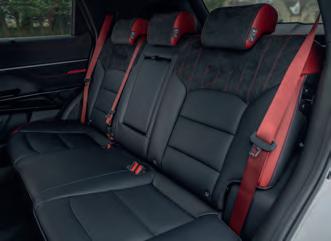
The Actyon’s cabin feels classy and well put together, with a curved glass screen the highlight up front. Nappa leather is standard, as is an interesting black and red colour scheme. The back seats are roomy and the boot behind them is huge – more so than ever when the seats are dropped to create a 1568-litre cargo bay

feel that if they’d invested as much in the suspension as they did in the tyres it would be a lot more composed. It ought to be a calm cruiser on the motorway, though; wind noise builds gently around the door mirrors as you pick up speed, but not to the extent that we’d expect it ever to become intrusive.
The 1.5-litre petrol engine develops 163bp and 206lbf.ft, and with all the shove coming in at 1500rpm it gets you about without a fuss. Top speed is quoted at 119mph; we couldn’t find a 0-62 time on KGM’s website, which seemed like a bit of an omission, but it’s enough to suggest a heavy load of people or luggage won’t embarrass you.
A combined fuel consumption figure for of 33.1mpg might, on the other hand. There are thirstier SUVs around but for a mid-sized model with a small engine and two-wheel drive it’s less than stellar. The same sized unit in the marginally larger and heavier Skoda Kodiaq returns 45.1-47.3mpg combined, for example.
Unlike the Kodiaq, the Actyon is not available as a seven-seater. KGM has
the still-excellent Rexton in its line-up (a former 4x4 of the Year winner) if you need that, but given the demand for less overtly full-on 4x4s with three rows of seats we’d expect there to be at least some potential customers for whom this is a deal-breaker. Not a problem, though, the company’s strategy is for gentle growth (remaining under the sales threshold that would cost it its small-volume classification means it’s exempt from getting rinsed for carbon credits by certain other manufacturers with a higher proportion of EVs in their line-up, and none of us would be rushing to lose that) so there’s no imperative for it to be shifting every last unit it possibly can. Thus the Actyon will remain a single-variant model for the foreseeable future – but the good news is that it’s a good variant which delivers perceived quality, distinctive looks and bags of equipment. Yes, there are still areas where you can feel the difference between it and a more premium SUV, but the gap is narrowing ever faster – and at £36,995, KGM’s latest SUV is value for money defined.


























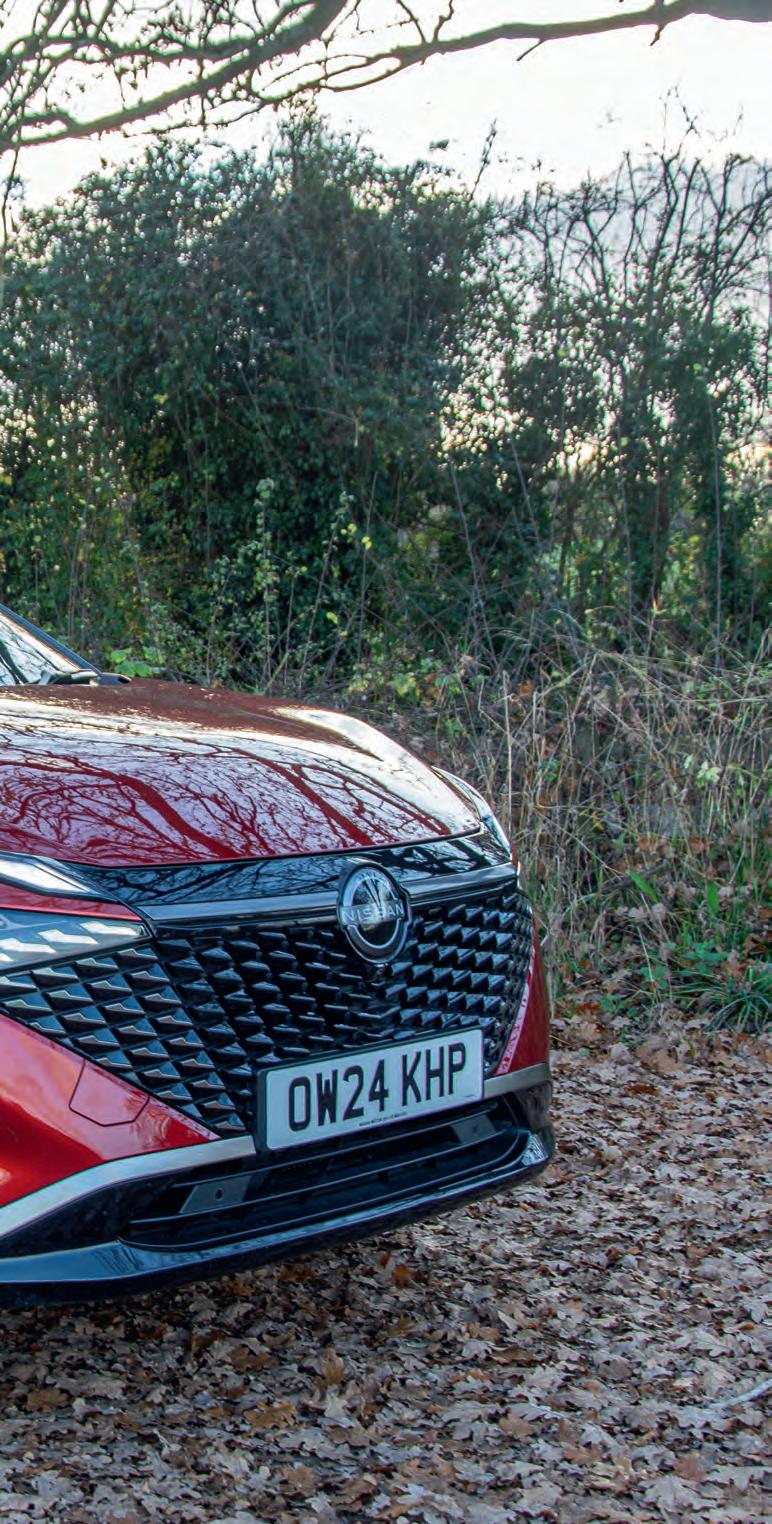
We had very good things to say about the Nissan Qashqai after test driving it just over a year ago. It’s an outstanding vehicle whatever the drivetrain and trim level; you can even get it with all-wheel drive, though in the e-Power form tested here it trades that for electric propulsion.
It’s electric but it has a petrol engine. This charges the batteries as you drive, and these in turn allow an electric motor to send 188bhp and 243lbf.ft to the front wheels. Maybe one day someone will find a way of using the engine to drive the wheels and they’ll be able to do away with all that weight and complexity, who knows…
Sorry. For now, what we have here is a facelifted version of the top model in the Qashqai line-up, the Tekna+ e-Power. It lists at £42,980 and ours would cost you £43,725 thanks to the Fuji Sunset red paint which, even on a dishwater grey winter’s afternoon, still popped out pretty nicely for our photos.
Our first instinct was that the new Qashqai didn’t look much different to the old one, but so much for out instinct. The entire bumper are, headlights and grille have been changed completely, with the latter in particular now featuring a huge pattern of shapes inspired by ancient Japanese armour. Sounds like waffle, but you can actually see it.
The rear lights and bumper have been changed too, and there are various little details like gloss sill and wheelarch trims for high-spec models. The alloys are new, too, as are three of the colours you can choose from – including Ocean Deep, a greenish blue (or possibly a blueish green) which is the only option that won’t add £745 to the bill. On the plus side, five are available with a contrasting black roof and unlike some manufacturers, Nissan won’t rinse you for any extra to add this feature.
Inside, high-grade models get upgraded seat trims and an alcantara finish on the dash, doors and cubby lid, and all but the entry level model gain ambient lighting with the usual choice of more colours than you knew existed. Details, perhaps, but the Qashqai already felt really good inside and now it feels even better – it’s convincingly premium at the top of the range.
So too is the tech, and unlike so much of the electro-puff you get on cars some of it is genuinely useful. The Around View Monitor

As part of the most recent updates to the Qashqai, versions towards the top of the range gain extensive alcantara trim on the dashboard and elsewhere in the cabin. It adds a further layer of perceived class – though the Tekna+ model’s diamond quilted leather seats, which give you a massage on demand, are very much the stars of the show here. The back seats (opposite page) are similarly trimmed but short on legroom if you want to carry a full complement of big ‘uns, however they fold close enough to flat for the Qashqai to be able to carry a big anything
system is nothing new on the Qashqai, but it now has more functions using the array of cameras positioned around the vehicle.
These include ‘invisible hood view’, which lets you look at the front wheels as if the bonnet wasn’t there. One less excuse for kerbing those big new alloys. The wide-angle camera at the front of the bonnet can also be used to give you a better view at T-junctions with limited visibility, and there’s a GPS function which lets the vehicle remember parking spots you’ve used previously and use the cameras to guide you in. The surround-view image can be toggled between 2D and 3D, too.
Another tech upgrade is that the Qashqai now has Google built-in. This is a good thing, apparently. It provides ‘a near-seamless interaction between a customer’s digital life and their vehicle’, allowing you to choose from an ‘ecosystem’ of apps and control a range of in-car and navigation functions via voice commands. Just say ‘hey Google’ and it will be listening. Oh, it will be listening.
The latest safety aids are here too. Well you’re no use to Google dead, are you?
Autonomous Emergency Braking now works more quickly and both the lane keeping and speed limit assistants have been upgraded. Best of all, though, there’s now a Driver Assist Custom Mode, allowing you to save your preferred levels of intervention from the many different on-board systems and choose this on start-up via the shortcut buttons on the steering wheel. Apparently, ‘Hey Google, make that bloody beeping stop’ doesn’t work.
Lots of improvements to what was already an exceptionally good family crossover, then. So what’s the overall effect?
Well, the Qashqai was already very good. The model we drove last year was the second-from-top Tekna and we loved it. ‘It’s very well specced,’ we said. ‘You can go one higher, if only quilted premium leather massage seats will do.’
Well, it was the Tekna+ we drove this time. And turns out only quilted premium leather massage seats WILL do. The £4150 price jump is a hefty one but in addition to the pampering, you get 20” alloys, a premium Bose stereo with bass box and
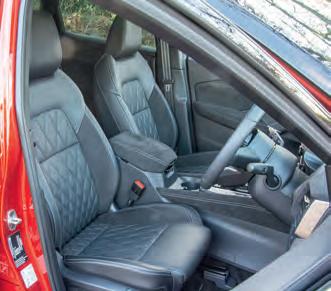
digital amp, four-way lumbar adjust on both front seats and multi-link rear suspension in lieu of the torsion beam with which other models make do. Worth it? Up to you, but we would.
We’re not saying that just because we’re suckers for a nice massage (hell, though, it’s easy to get used to). What absolutely blew us away with this particular Qashqai was that even on 20” rims and the 235/45 tyres that come as a result, its ride quality was just unbelievably good. No, this wasn’t on a diet of nothing but smooth new roads – in fact, we spent a particularly large proportion of our time in the Tekna+ negotiating the sort of coarse, broken urban roads that are the sorry lot of British drivers today. Seams, ridges, rough edges, pot holes, speed bumps, things that used to be speed bumps, pot holes where there used to be speed

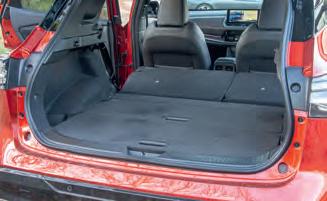
bumps, ridges with rough edges descending directly into pot holes next to where there used to be speed bumps… it’s all there to be enjoyed within half a mile of our office. Our D-Max GO2 rumbles and shudders over it all on its 285/75R16s but there are times when we’ve got SUVs on test that we wonder if we’ve just taken out a sidewall. Not so in the Qashqai, though – it was like gliding. We’ve been around long enough to
know not to use superlatives, but it really did bear comparison with the classiest, most expensive vehicles we’ve driven. The fact that these include Range Rovers, hundredgrand Mercs and Bentley Bentaygas should qualify this.
It’s not quite as refined as it is smooth, as you hear the engine whirring away at times, in particular before it’s fully warmed up. Being a generator rather than driving the wheels, its note stays the same even when you’re speeding up and slowing down – you get used to it quickly enough, but it’s quite an odd experience to start with. The engine note fades into the background at higher speeds, at any rate, with a bit of wind noise taking over. This isn’t intrusive, and even with the low-profile tyres neither is the slight road rumble that builds up.
With just the front wheels being driven, this version of the Qashqai won’t stay with you as well as the 4x4 model on snowy or mud-strewn roads. There’s a great deal of natural grip in its chassis, though, and it’s very confidence inspiring indeed on quick A and B-roads. A reminder that the e-Power drivetrain dishes out 188bhp and 243lbf. ft – that’s pretty decent in a vehicle of this size, and while 7.9 seconds doesn’t sound particularly blistering the immediacy of the response when you hit the loud pedal makes it feel faster than that. The smooth ride continues on faster roads, too, where
the multi-link rear seems less fidgety than the torsion beam on lesser models, and as always this is a big factor in how well a vehicle handles. It might not be pin-sharp and responsive like a sports car but it’s smooth and predictable, it does what you tell it and you can feel what’s going on, and in a crossover SUV that’s everything you want and more.
Of course, you also want a great big infotainment screen running a system that makes sense and acts fast. You want places to put your stuff and you want a good view all round. You want a big boot and when the seats go down you want a huge boot. And the Qashqai delivers all that too. It doesn’t give you enough space for one tall adult to sit behind another without both of them having to yield enough space to feel cramped, but it’s a car for carrying kids in the back and it does that without a fuss.
The Qashqai has always been a vehicle that’s very, very fit for purpose. In e-Power form, we’ve never managed to get close to the official figure of 53.3mpg, so despite the extra performance we’d question its value compared to the less expensive mild hybrids that make up the rest of the range, however as a crossover SUV it punches way above its weight for luxury and practicality alike. Last year’s facelift gives it a really eye-catching appearance – and more than ever now, it has the substance to go with it.
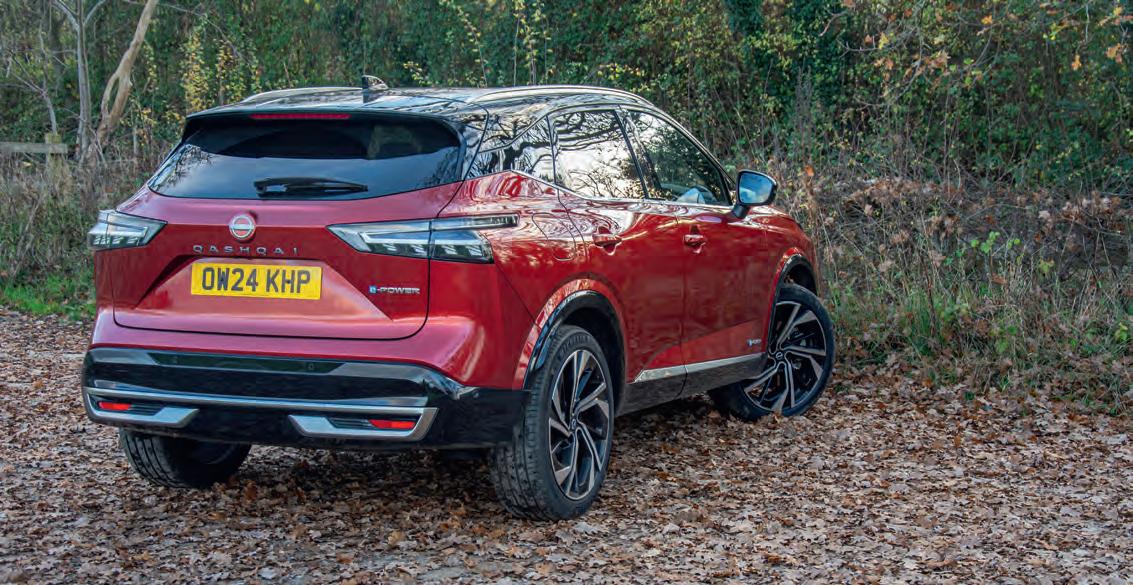



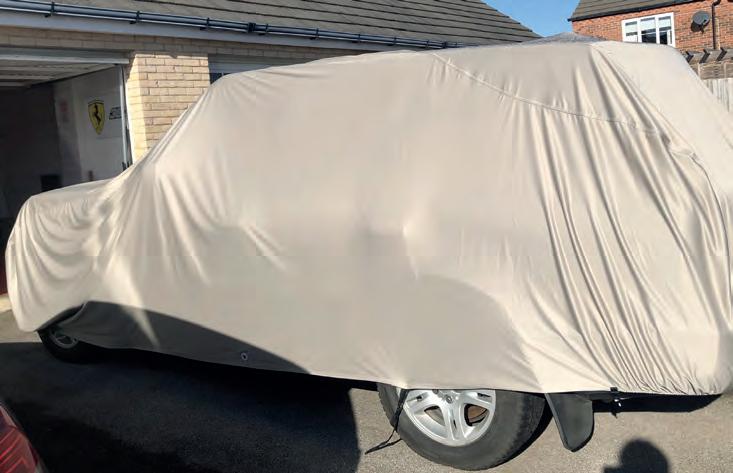








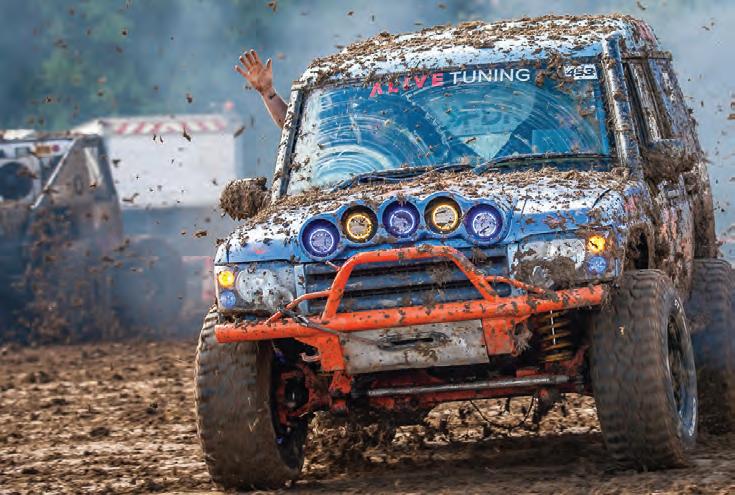




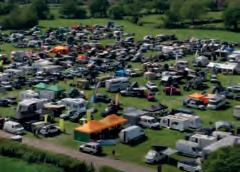





















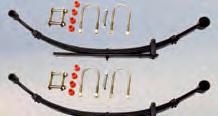








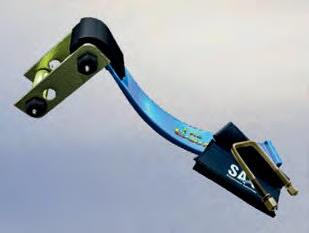










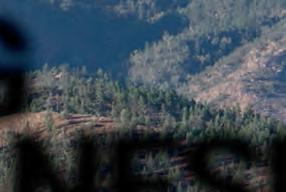




Conceived in Britain, made in France and driven everywhere – the Ineos Grenadier really is a global vehicle. This one adds another nation to the collection, too, with an identity that doffs its cap to the heroic 4x4s so beloved of off-roaders in its home land of Australia
Words Tom Alderney Pictures Ineos Automotive
Since before the Ineos Grenadier went on sale, the company has been clear that it expects owners to modify and accessorise their vehicles. Executives spoke about taking an ‘open source’ approach to their designs so that the aftermarket could create products with which it could be tailored for various
uses – and the aftermarket has done just that, developing a wide range of solutions aimed at enhancing the vehicle for work, play and, in particular, adventure travel.
As if to highlight what can be made of the vehicles – and what imaginative accessory designers can create – Ineos’ Australian importer has produced the Kaiju.

Based on the Grenadier in Quartermaster Chassis-Cab form, this is the company’s first special project build – and Ineos says it ‘epitomises an iconic heavily modified Aussie 4x4 overlander.’
Before getting into the equipment Ineos used to build the vehicle, there’s a lovely bit of mischief behind its name. As we

all know, Aussie off-roaders traditionally head straight for the Toyota Land Cruisers – well, Kaiju is a Japanese word for a mythical monster, literally a ‘giant creature’, and Ineos says it was chosen ‘to convey the powerful capabilities of the Grenadier and acknowledges Australia’s love affair with modified Japanese 4x4 vehicles.’
You’d almost think that this was the same company whose owner restored the first production Land Rover just as his own replacement for the Defender was getting ready for launch…
So, the Kaiju. It’s a comprehensively built overlander but it’s also a bit of a show car, with a fully blacked-out exterior. This doesn’t
appear to include the windows, which makes sense – nothing ruins expedition travel like being able to see the world around you, said nobody ever – but there’s a very definite theme to it. If, perish the thought, you were the kind of person who drives an old-shape Land Rover Defender done up to appear like a worldwide warrior so as to look

Norweld’s camping rig combines the company’s Deluxe Lite Canopy with a heavy-duty ute tray. It contains an integrated 40-litre poly water tank, a 130-litre Bushman upright fridge and a 1200mm trundle drawer with a drop-in table. The fold-down ladder at the back is flanked by a pair of spare wheels, then up top there’s further carrying capacity in the shape of a heavy-duty Rhino Rack cargo platform
cool on the street, this is the Grenadier you’d buy to replace it.
It’s based on the Trialmaster model, meaning it left the factory with a raised air intake, auxiliary battery, access ladder, tow hitch and more as standard – not to mention locking diffs in both axles. This one also features a ‘roo bar and rock sliders from Ineos’ own accessory range – as well
as chequer plates, it sez ‘ere, though for the life of us we can’t see any in the pictures.
What we certainly can see is a Norweld camping rig which combines the company’s Deluxe Lite Canopy with a heavy-duty ute tray to provide a home for an array of equipment. There’s an integrated 40-litre

poly water tank in there, along with a 130-litre Bushman upright fridge powered by a wiring loom from REDARC Electronics and a 1200mm trundle drawer with a drop-in table. At the back, a very robust looking folddown ladder is flanked by a pair of spare wheels, then up top there’s further carrying capacity in the shape of a heavy-duty Rhino Rack cargo platform.
Further handy stuff includes a bolt-on jerry can holder, then there’s a bit of bling supplied by a set of sequential tail lights. The canopy has a proper two-pack painted finish and promises to resist water and dust ingress, which is pretty important when your dinner’s in there.
We mentioned REDARC a moment ago, and the loom for the fridge is only the beginning of what the South Australian outfit has provided for this built. An Alpha150 lithium battery provides a capacity of 150Ah and discharge current of 200A, allowing the use of a 2000W RS3 pure sine wave inverter. There’s an Alpha50 battery management system for charging, an automatic transfer switch to toggle between battery and mains supplies and in-built RCD to protect against the danger of shocks or fires if a cable gets damaged and live wires are exposed. The system has Bluetooth connectivity to a monitoring app, as well as built-in temperature control, and it’s IP56 rated for protection against dust and water.
Something else we mentioned a moment ago was the vehicle’s tyres. These are
n Access from 3pm on Saturday 5th July
n Driver & All Passengers Get in Free
n £1 General Yellow Cars
n £10 Grouped Yellow Display Vehicles
n Grouped Display Vehicles must be booked in advance
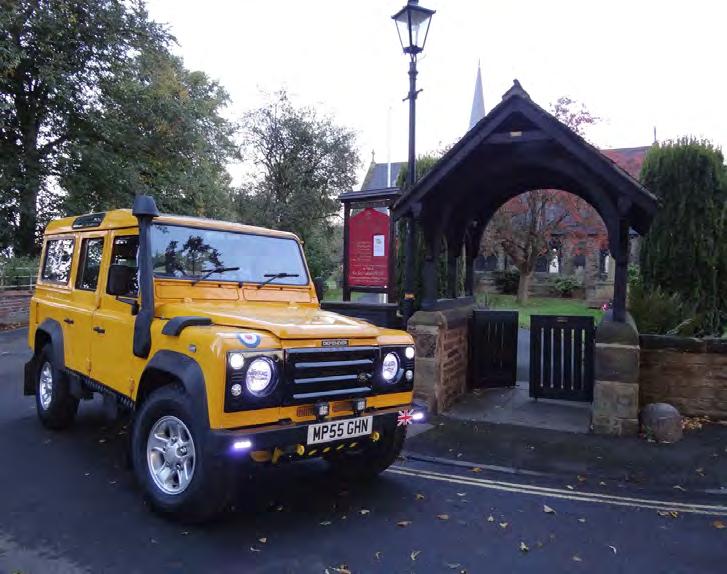
n Access on Sunday 6th July 10am-4pm
n Save 20% when you book in advance
n £8 per adult | £4 per child (5-15)
n (On the Gate £10 per adult | £5 per child)
n Free parking
n Under 5’s go free
n Dogs on short leads welcome
Real ale and cider tent | Street food vendors and food court | Picnic area
Shop from our many stalls selling everything from car accessories, camping equipment, gifts and novelties | Children’s inflatables and activities
Thousands of yellow cars are coming together for the biggest gathering of yellow cars on record. Bear witness to the spectacleit’s bound to put a smile on faces young and old alike! Take a look around our groups of display vehicles, including Super Cars, Classics, 4x4s and Custom Cars. And look out for some famous cars and faces you just might recognise.

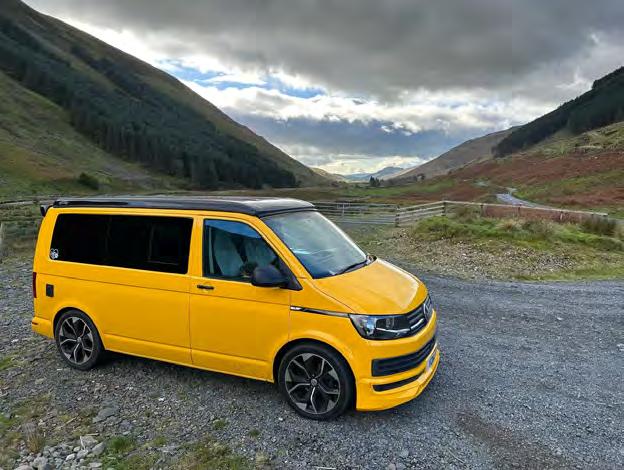




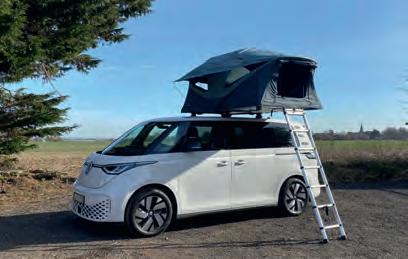



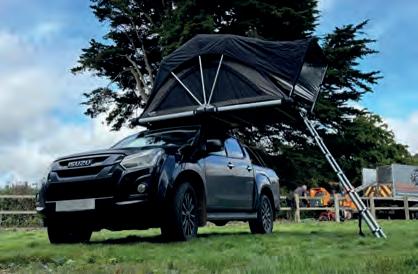








315/70R17 BFGoodrich KM3 Mud-Terrains, a size which stands some 34.4” tall and 12.4” wide. Nice and sensible, then, and a classic giveaway that this is a proper off-road build and not a pavement princess – the latter is always exposed by stupidly fat rubber, but even if a 70 profile has a bit less sidewall than we’d like this is still a seriously businesslike bit of rubber.
The wheels and axles are controlled by a set of JMACX Alpha 2.5 remote-reservoir shocks. These have a 2.5” internal bore, 4785PSI rated hoses and fittings and a 22mm microcracked and polished shaft for increased lubrication and longevity, so even with the weight of all the extra kit on board you’d have to be trying very hard indeed to get them foaming. To be honest, even if you were taking advantage of the 168-litre Brown Davis long-range fuel tank and sucking up every drop of it while running flat-out over corrugations, our money would still be on the shocks.
These are also 16-stage adjustable, which sounds particularly handy in a truck built to cope with vastly differing loads, terrains and conditions. In some cases this means grovelling around under your wheelarches to twiddle at little dials you can’t see properly and, if it happens to be muddy, at hidden beneath a large wet cake of the stuff – in Australia the worst you’ve got to worry about is probably getting beaten up by an eight-legged stowaway, but in any case you don’t need to worry in this bad boy as the shocks are JMACX’s Electric
variety, which are adjusted from the comfort and safety of the cab.
The controls are joined in here by XRS370C4P Compact and XRS-660 Handheld UHF CB radios from GME. The latter features a colour TFT LCD screen, while the former has a die-cast metal chassis and magnetic microphone mount. There’s a heavy-duty radome-housed UHF antenna on a bull bar mounting bracket, and the vehicle also carries a Personal Locator Beacon in case of full-house emergencies. Less dramatic situations are aided by a pair of Maxtrax recovery boards mounted on the roof rack.
Then there’s the lighting. Because there’s got to be lighting. The bit that’ll catch your eyes, or possibly sear them out of their sockets, is a bank of eight Type-X Minis from Stedi – four floods, four spots –mounted on the same brand’s 4” under-rack brackets. There’s a pair of Stedi’s C-4 Black Edition dual-lens LED cubes at the back, too, and the vehicle carries a Micro Touch dualcolour 7.5” hand-held worklight.
It may be that the Quartermaster Kaiju is a show car, but with all its equipment being available off the shelf you could build one just like this. Some money would help – you’d be well into six figures – but the point is that you can do it. ‘Yes but warranty, squeak, werp,’ goes that annoying bloke on social media, however Ineos has thought of that. Its cover includes ‘select aftermarket
components from official accessories partners when ordered through retailers’ – we had a Land Rover main dealer tell us once that the warranty on our 90’s factory immobiliser was invalidated because we’d used the vehicle off-road, which was interesting, so we can tell you that this is a fairly radical departure by the standards of what most 4x4 makers will tell you. As Ineos puts it, ‘this provides customers with castiron peace-of-mind even when customising their Grenadier or Quartermaster to suit their own particular needs.’
Justin Hocevar, Ineos’ Regional Director down under, said of the vehicle: ‘We wanted to create a truly unique Quartermaster together with some incredibly innovative local engineering and accessory partners. The Quartermaster Cab Chassis is a blank canvas that allows for great versatility when it comes to customisation – so together with these project partners, we let our imagination run wild.
‘Ultimately, the Kaiju Quartermaster expresses our Australian vision of Built For More.’
Whatever vision of your own it expresses, this is a truck that certainly shows off the potential built in to the Grenadier. It’s a hugely capable truck in standard form, as we’ve come to know well – but when you realise that a showroom vehicle is nothing more than the starting point for a creation like this, you realise that it’s the spiritual successor to the Defender in more ways than one.








Taking bits from one Land Rover to keep another alive is a time-honoured tradition. Those bits can be quite big, too… thought not normally quite as big as an entire Range Rover body

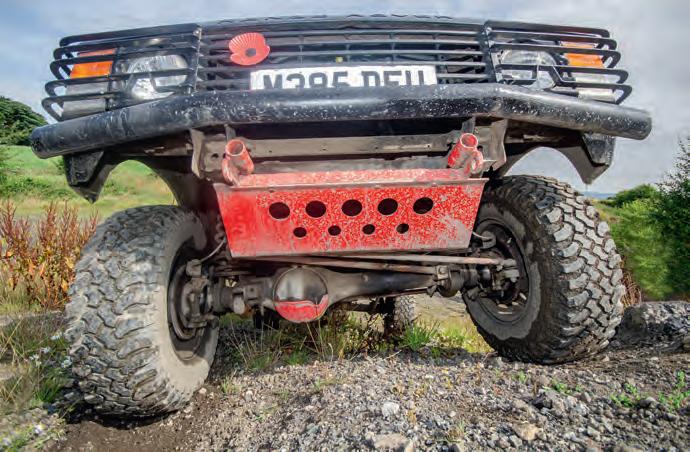
The days may have gone when a Land Rover was an unpretentious do-it-all motor for ordinary people. Today, it describes itself as a ‘modern luxury brand’ or something like that and its accessory packs and paint options are ‘curated’. You have to wonder who falls for this stuff, but people do so it must work.

Anyway, this is the story of two blokes from up Chesterfield way who curated a Land Rover. They curated it out of two other Land Rovers, which in turn had curated themselves into donor vehicles.
The curators in question were Paul Wood, who owned the one they built by the time we photographed it, and his mate
Johnathan Wharmby. It was he who got the ball rolling when he bought not one but two Range Rovers.
One of these was running and had a Brooklands body kit. The other had spent the previous eight years in a barn and looked like, well, a Range Rover that had spent the previous eight years in a barn.

That there’s a Range Rover body – with a Discovery rear bumper under it. Unlike at the front, where he was making his own heavy-duty job anyway, Paul had to adapt the Disco unit to fit
The one with the bodykit ran well, so Johnathan set to work on fettling it for the MOT. Like any person of taste would do, he started taking off the Brooklands kit… only for the body to come with it. There’s rotten, then there’s rotten like a carrot, and then there’s rotten like a rotten Range Rover. This was rotten like a Range Rover made of rotten carrots – getting it back on the road would have cost way more in welding time than it was worth, so instead he broke it up and sold it for spares.
Which left the other Range Rover, which was covered in mould. The reason it had been kicked into the barn in the first place had been that the owner bought the other one, so Johnathan assumed that it must have been worse. But when he and Paul went at it with the jetwash, something remarkable happened.
‘We couldn’t believe how clean and straight it was,’ says Paul. ‘We found no rust or rot anywhere on it. The sills, inner wings and boot floor were spotless.’
Now, that’s not normal for an abandoned Rangey. But there was a reason. ’As we were going through it,’ continues Paul, ‘we discovered paperwork showing that it had had a full body-off restoration which was completed just before it was MOT’d and then parked in the barn.’ So recomissioning it was a piece of cake, and soon it was MOT’d once more and back on the road.

This is the first thing that would alert the average Landy spotter to the fact that there’s something odd going on. Those doors are pure Range Rover – check out the wood trims if you really want to get your anorak on – but the dash console is that of a late Mk1 Discovery. Fitting it to the Rangey’s bulkhead was one of those jobs you don’t want to do more than once – trim, dry-fit, trim, dry-fit, repeat, repeat some more, etc – but the result was worth it, because it all looks like it was made to fit together. As you can tell from the state of it, Paul didn’t build the vehicle with hardcore off-roading in mind – but it’s an extremely competent lane wagon and an everyday 4x4 that’ll do whatever he asks, be it work, play or towing
All went well, for about six months. But then a completely unidentifiable electrical fault curated itself out of the blue and killed the engine stone dead. ‘We did checks on the engine, loom and everything,’ Paul continues. ‘But we couldn’t figure it out. Several people came over to try and help, but with no success.’
This left Johnathan short of wheels, so when a 1995 3-door Discovery came up locally for not much money he did the obvious thing. ‘It had several months’ MOT left,’ says Paul, ‘so it didn’t seem a bad buy at the time.’
Now, back in its nineties’ heyday the Mark 1 Discovery was a pretty fantastic

all-rounder. It was great around town, smooth on the motorway and unbelievable off-road. It could tow like a champ. It could do almost anything.
Like rust. In particular, it could rust. It had a chassis that could survive anything. But if you wanted a Land Rover in powdered form, just get a Disco 1 and give it a bit of time and bingo. Few vehicles have been more capable of curating big ugly holes with jagged edges, or MOT fail sheets that read like the Magna Carta, or indeed weeping owners.
So here’s Johnathan using the Disco as his daily driver, all the while wondering what he’s going to do with the beautiful Range Rover that’s sat on his drive and steadfastly refusing to fire up.
As it turned out, the answer was waiting for him to uncover. And all he and Paul had to do was a few pre-MOT checks.
They’d already seen that a few panels were going to want replacing, so as part of the job they stripped off the old ones. And that was when they saw the truth. ‘It only had one good body mount holding it to the chassis,’ says Paul. ‘The boot floor was gone all the way round and the inner wings front and rear were non-existant, as were both rear seatbelt mounts.’
So, one good runner with a wreck of a body, and one good body with a wreck of an engine. Sounds like time for a heart transplant, right?
The guys did look at that idea. But then they had a better one. ‘Why not just swap





























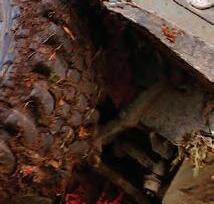



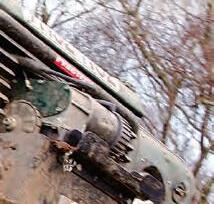
























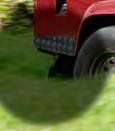
































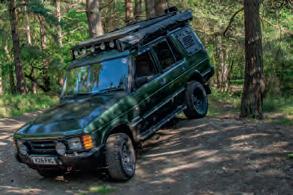







































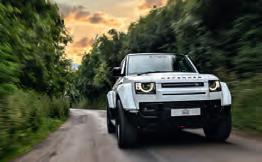

































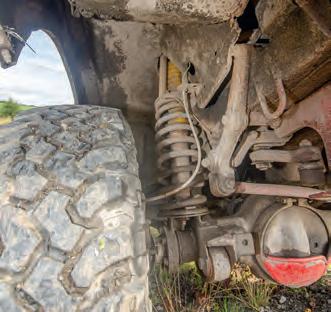
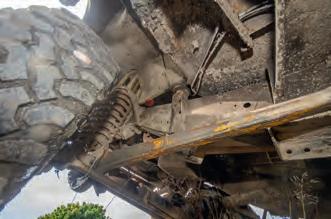

With the same chassis and body mounts under both the Disco and Range Rover, swapping the bodies was as straightforward as any hybrid job will ever get. The trigger for the project actually came when a pre-MOT check revealed that the Disco’s body was only being held to its chassis by one sound mount…
Above right, an easy solution to the whole Discovery-chassis-and-Range-Rover-body thing was to do away with the original bumper and replace it with a heavy-duty item shaped in thick steel tube. A perfect example of how the off-road element of the project solved the problems there’d have been if Paul had been trying to keep it looking factory-fresh


You can lift a Discovery, or a Range Rover, using +3” springs and +2” shocks, and it turns out you can do the same to something that’s a bit of both. The shocks are located on -2” drop mounts, and it’s Polybushed throughout – bump stops included
the bodies over from the Range Rover to the Disco,’ says Paul. ’They are after all the exact same chassis. And the Disco’s chassis and running gear were mint, with an all new suspension lift kit on it.’
This was back when the bureaucrats whose job is to stop everyone from doing everything were yet to realise such clever thinking was possible and therefore ban it. No doubt these days it would involve more
paperwork, more time and, of course, more admin fees, but back then all it took was a call to the DVLA (something else you can’t do now, at least not if you want to have a grown-up conversation with an intelligent




The original 300Tdi Discovery engine is still in place, though it’s not completely as it was when it still had a Discovery bonnet above it. The EGR has been removed, of course, the fuel pump has been turned up and the exhaust has been opened up using a de-car pipe. Beyond the crankshaft, a heavy-duty clutch and fork prevent against the obvious while on the intake side, the snorkel pulls air through a pond filter element then sends it straight through to the turbo


It’s all standard down the drivetrain – breathers (and mud) aside, the gearbox, transfer case and diffs are all as they left the factory. So too are the axles, save for the addition of heavy-duty diff guards
‘I can honestly say I know every nut and bolt on the vehicle. So I sold my own Disco to pay for it and started to make it my own’
adult) and they were reassured that yes, what they were proposing was fine.
The job itself was a lot less remarkable than what came before, because it was so straightforward. Off came the Disco’s old body (something you could just about have done by sneezing on it) and the whole plot was thoroughly cleaned and prepped. Then it was a case of splitting the Range Rover from its chassis, lifting it into the air (a big thumbs-up to the guys on the farm next door for dropping by with a telehandler) and wheeling the Disco frame underneath it.
The trickiest bits, both of which should make you shudder, were relocating the Disco loom and dashboard into the Range Rover. The latter required a lot of trimming and test-fitting before it would finally marry up to the new bulkhead, but by taking it slowly the guys got it spot-on – the result being that it feels like it was always meant to be there.
Paul and Johnathan took the chance to fit a wading kit while the body was off, then plumbed in a snorkel and modded the original bumpers to work with the combination of Disco frame and Range Rover body. And that was it, job done. Now, instead of a shot-through Disco and a non-running Range Rover, Johnathan was the proud owner of a sound, solid and very much functional truck with a brand new MOT and, after a bit of wrangling with VOSA, a V5 describing it as a Range Rover Hybrid. Well, he WAS the proud owner, but it won’t have escaped your notice that he’s not anymore. ‘After such a lousy year, he decided to sell up,’ says Paul. ‘Well, I couldn’t let it go after all the hard work I’d put into it was well!
‘I can honestly say I know every nut and bolt on the vehicle. So I sold my own Disco to pay for it and started to make it my own. Since owning it, I’ve made a few changes, like bigger tyres and +3” springs instead of the +2” ones we put on. It’s
mainly a green lane toy, as well as my daily driver and tow vehicle.’
You can add hardcore off-roader to that list as well. Well, at times. ‘I was getting ribbed by my mates in Trans Pennine Off Road Club for not using this one at our pay and plays, so I went for a trundle round Holymoorside to show them that it is a capable off-roader. I got stuck three times in there and damaged the wing a bit… It wasn’t too bad considering it’s not what it was intended for, but my mate Joey Handley found it hilarious as he pulled me out each time with his Pajero!’
A Land Rover being recovered by a Mitsubishi… now, THAT doesn’t sound very well curated, does it? But then, one of them is a modern luxury brand and the other is just a company that makes trucks, so who knows. At any rate, try taking a modern Range Rover and a modern Discovery and mashing them together into one car… we somehow doubt you’ll manage to do it with some spanners and a telehandler.




















Land Rovers are returning to Bath & West this April for a weekend filled with Land Rovers!
Exhibitors old and new will join
everything from parts & accessories to tyres, clothing and toys. Talk to overland adventure specialists about your next trip, discuss modification options with companies with the know-how and other experienced Land Rover owners.





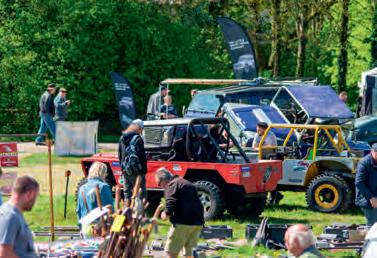


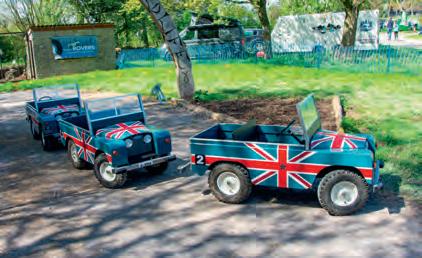













Life’s complicated isn’t it? Obviously most journalists have the moral attributes of a hyena which died through eating too many kittens. So we’re not exactly in a place where we can even see the moral high ground, let alone stand on it. However, some
events cause even us a certain amount of cognitive dissonance.
This is obviously one. At one level the Children’s Desert, which has been running for 20 years thanks to Hyundai, does some really good work. The event operates in the more remote parts of Morocco and this
year the automotive caravan set off to build and equip two libraries, complete with all equipment including computers.
It wasn’t what you would call easy. The weather was a serious challenge, with high winds, rain, sandstorms and other unseasonable, unreasonable elements

conspiring to make the expedition from Tangiers down south a real adventure. But eventually they got to the remote village of Ouzina and duly set up the library – this was the scene, 20 years ago, where they set up their first school. The second library was set up in Tisserdimine.
This apparently required a convoy of 39 vehicles and over 130 people. It took the entire 4x4 range from Hyundai, including the new Ioniq 5, plus Staria, Tuscon and Santa Fe which for some inexplicable reason Hyundai says ‘moved like fish in water’ on the sandy tracks of the Sahara.
Again, according to Hyundai, the local people, struggling to live in an inhospitable place with minimal state or natural resources at their disposal, were thrilled to see the Ioniq 5 since it was the first time an all-electric vehicle had penetrated that far into the desert. Given that over 80% of


Morocco’s electricity comes from coal, oil and gas, this seems in the bigger picture to be rather less than thrilling.
Hyundai pulled out of manufacturing in Algeria a few years ago and now they build vehicles in Morocco, so this tie-up makes some sense. In the last two decades they’ve built and supplied everything from schools to wells and now libraries, and these are all exceedingly good things.
Good too that the caravan took along six opticians from Alain Afflelou’s foundation to check eyesight and give prescription glasses to about 350 people – what a real
difference that will make to their lives. Good too that all the materials taken along, like notebooks, books, pens etc, were all purchased in Morocco and then transported within the country. Compared to the usual NGO, white-saviour routine, this makes a welcome change.
Oh I don’t know. Yes, it’s good, a good thing, that will help people in those villages and anyone nearby and anyone who passes through or who benefits and then moves on. And why shouldn’t Hyundai showcase its vehicles if it’s doing all these good things, where’s the harm? As you were.




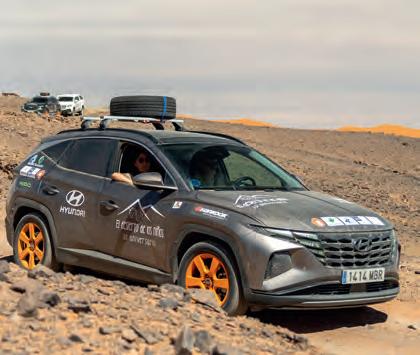

A huge convoy of conspicuously first-world vehicles kicking up sand as it rumbles through a remote part of the developing world sounds like the sort of gruesome image we used to see in the bad old days of the Camel Trophy. But the Children’s Desert expeditions are nothing like that – it uses 4x4s to take healthcare and education to parts of Morocco where it would otherwise be scarce. This year the convoy built two libraries and donated around 350 pairs of glasses to kids who needed them. However you look at it, that’s doing good












Building a fully featured Land Rover camper then shipping it to Africa for the trip of a lifetime sounds like a great plan. But sometimes, life has other ideas… Words and Pictures: Michael Troup





Last month’s issue of Overlander 4x4 included a story on the build of my Land Rover Defender 130, an ex-utility vehicle which I rebuilt from the chassis up as a self-contained all-terrain motorhome with a bespoke habitation unit from Custom Campers in Germany. I had previous owned a 110 with a roof tent, in which my wife and I travelled extensively throughout Europe, but while this was a great vehicle it did teach us that preparing dinner in the pouring rain is not much fun – and that sometimes only a hot shower will do.



with a thatched roof), you’ve got a one-stop shop for all you need to take care of.



Europe is great but for many years, I had been dreaming of exploring Africa. So it seemed like the ideal plan – build the vehicle I really wanted, and use it to take the trip of a lifetime. Which is why, one October morning in Cape Town, you’d have found us rocking up at African Overlanders in a generic small white hire car. They had taken care of shipping our 130, which had arrived in the port by the time we flew into town but was yet to clear customs. Not a problem, when your shipping agent even has accommodation for you in a rondeval (a traditional straw hut


The following day was dedicated to shopping around Cape Town for some of the essentials we hadn’t been able to ship (like oil for the Land Rover), then the day after that we went to collect the 130 from the container. This is a nerve-wracking experience, but the truck was exactly as we had loaded it – you hear stories of rampant pilfering, but I get the feeling that anyone who opened the container doors and saw how tight a fit it was wouldn’t have fancied crawling along the floor to get to the front.

















Shipping the Land Rover was a very easy and efficient process, and we got it back with no damage. Naturally, there was a small celebration that evening in Cape Town, with a bottle of Irn Bru opened. There was further shopping to be done before we set off, as we needed supplies of food and wine to fill the 130’s fridges. We also decided to relocate the spare wheel back to the roof from the bonnet. This meant changing the roof struts again… however we had forgotten to pack the additional struts Custom Campers had been kind enough to send us.

another of the company’s builds. This was an Iveco 4x4; we spent a while chatting with the owners and showing each other around our vehicles before they left to find storage for their camper while they headed home to Germany.

Talking of Custom Campers, on our second day in Cape Town we came across

Their trip was coming to an end, but ours was just beginning. After a few days in Cape Town spent getting ready, hooking up with friends and doing touristy stuff, with the 130 fully stocked up and ready we headed off on the trek north to Namibia.

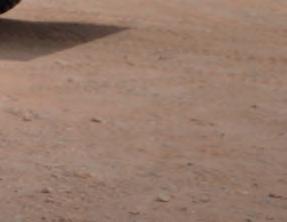


We entered Namibia with minimal fuss and a cursory check from the customs officials.

From the Vioolsdrift border we headed to Fish River Canyon, on the way spotting zebras, ostriches, oryxes, springboks and baboons (and marking them off in our Animals of Africa book). Having covered several hundred kilometres in the day, we arrived at our bush camp at around 7pm. It was an old quarry just off a side road. We had a relatively early start the next morning and headed towards Kolmanskuppe Ghost Mining Town, a strange landscape of abandoned buildings that have been taken over by the desert. We then moved on a few kilometres to the coastal town of Lüderitz, where we filled up our 130’s collection of fuel tanks (210



File this under things you don’t want to do. A very simple detour off the road to check out a historic shipwreck ended up with a badly stuck vehicle that broke through the crust of the sand while the driver was trying to find his way back to the trail he’d come in on. Four hours of digging later and, with the aid of its traction mats, the 130 was in a position to be pulled out of trouble by a local fisherman. The abandoned mining town of Kolmanskuppe, which is being reclaimed by the desert, is vast and incredibly strange
litres in total), collected some essential supplies and headed towards the beach to have lunch. We found a small camp site which allowed day visitors and had a very amenable security guard who was happy to let us enter without charging the full fee.
There’s a place in Lüderitz called Eat Sum Mor Meat, but instead we finished lunch and continued our journey north.
Another few hundred kilometres took us to a spectacular campsite in which each pitch had its own bathroom with excellent hot showers, toilet and BBQ area.
We made this our home for the night and set about chores. Claire cleaned the inside of the camper as we had amassed quite an alarming amount of sand, while I turned my attention to the Land Rover itself. One
of the brake disc guards was removed as it was poorly, and the front mudguards were extended as the stones from several hundred kilometres of gravel roads were taking their toll on the rear shocks.
One of the benefits of an early sunrise is an early start to the day. The following morning, we were on the road at 6am and on our way to Sossuvlei to see the huge









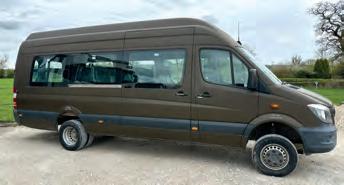
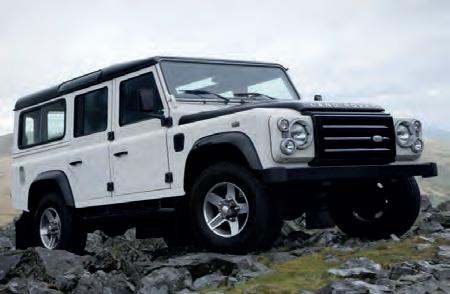
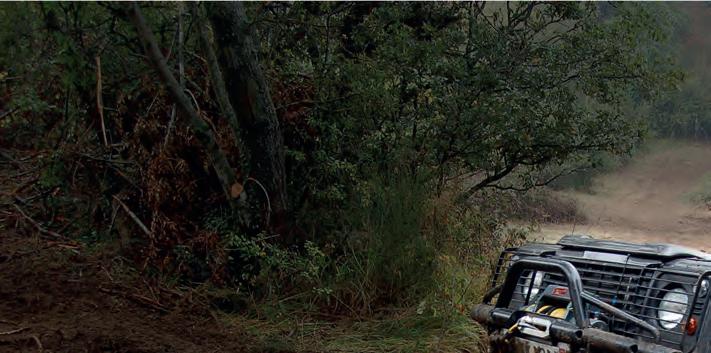






sand dunes and 500 year old petrified trees (known rather ominously as Death Vlei). This meant lowering our tyre pressures to drive on the dunes.
After finding out the National Park camping fee, headed for an alternative site at Weltevrede. Here we found very friendly staff, cold beer and warm showers – although the camper has two fridges and a hot shower, it was a welcome stop nonetheless. Most importantly, we found working wi-fi, the first for several days. During our last few days in Namibia, we saw several more animals including warthogs, wildebeest and squirrels. Come to Africa, see squirrels; maybe when we get back home to Scotland we’ll meet a leopard in the centre of Aviemore. The point is of course that with keen eyes and a good set of binoculars, every mile is a mini safari.
Not every mile is also a brutal assault on the vehicle, but a lot of them certainly are. Some of the roads are horrible – I was

surprised that the Defender managed to cope with the constant punishment, but very glad for my choice of BFGoodrich tyres and Fox shocks – and also my choice of Tomcat Motorsport to supply said shocks, as Paul had calculated exactly what would be right for our 130 and the battering they were getting was proving that he got it spot-on.
I can only describe the roads as being like driving over a series of bumps ranging in size from house brick to kerb stone, equally spaced and going on for hundreds of kilometres. Sometimes the corrugations would be bigger and there is no escape from them; it doesn’t matter if you drive on the wrong side, or along the very edge. We managed to change our tyre pressures and speed to minimise the impact but it is still tough going.
Occasionally, there was some let up from the horrible conditions. The road sign warning of a grader ahead is one of the most welcome sights you can see!


Each evening, I spent some time checking over the Land Rover. Mostly it was just little things and small improvements, but some of these required some shopping; I was surprised to find that the automotive and engineering supplies shops in Namibia were largely better equipped than the local shops at home and that I was always able to find what I wanted, no matter how obscure.
We continued our journey north and on towards the Skeleton Coast, taking the occasional detour to check out the many things there are to stop and look at along the way. Unfortunately, on the way back to the road from one of these I made a couple of errors, first in navigation and then with our tyre pressures.
Instead of backtracking exactly along the path we had came on, I was maybe 100 metres to the side before I found it. While aiming to get back to the track, doing about 30mph, we broke through the crust of the salt pan and became rather stuck. At this point we were on our own, so there was nothing for it but to get out the sand tracks and shovel and starting to dig.
After a couple of hours’ digging, a local fisherman came past and offered assistance. We joined our kinetic recovery ropes so he could pull from the track. Meanwhile we continued to dig and dig, before finally placing four sand tracks in front of our wheels. Claire had dropped the tyre pressures to 10psi and we were all set – and with relatively little fuss, the car rolled on to the tracks, got back up on top of the salt crust and drove straight out to the path. We thanked the fisherman for

his help, packed away our now very sandy recovery kit and headed for the Skeleton Coast National Park.
Entry and exit times are controlled at the park gate, and you need a permit to enter (it’s free, but you still need one). Thankfully, despite spending four-plus hours digging out the car we were still in time. We continued north, stopping on occasion to see the various wrecks – including one of an onshore oil rig which turned out to be home to some jackal which were remarkably close by the time we noticed each other. I’m not sure who was more surprised when they crawled out from one of the tanks but having looked at us they just meandered off behind some dunes.
We found a great wild camp by a small water hole, where there were lots of signs that large animals had used it recently. Nothing very exciting came past while we were there, but we did have our first tin of haggis that night.
The following day was a mission to travel the 300 kilometres or so towards the Anderson Gate at Etosha National Park. While we were happily cruising down one of the faster gravel roads, there was a loud exclamation from the passenger seat: ‘GIRAFFE!’ As you might have guessed, Claire had spotted the first giraffe of the trip, ambling alongside the road and grazing in the treetops.
I came to a halt quicker than normal and prepared for the necessary U-turn. We pulled up just next to where Claire had seen it, and sure enough there was a giraffe poking its head out and looking at us, as if it was just as curious about us as we were about it.
Our camp site just outside Etosha had car washing facilities. Well, a hose, but that let me rinse the worst of the sand and salt pans off the Land Rover – which, after its recent brush with gravity, was welcome.
As a general rule, the early mornings were cool until the sun rose above the horizon. From then on, our goal was to be driving, which would afford us the luxury of air conditioning – though despite this, temperatures inside the vehicle were seldom below 33°C.
On the way from the Skeleton Coast to Etosha, it became abundantly clear how diverse this landscape was. We had encountered a vast salt pan, huge red sand dunes, barren desert and finally, on
reaching Etosha, a green forest of mopare trees. This was all in the space of around 400 kilometres.
The following day, we woke early to make the best of our time inside Etosha National Park. And it didn’t disappoint. We bumped into a pride of lions quite early and the animals just kept coming – lots of giraffes, zebra, wildebeest, more springboks than you could count, a couple of rhinos, a spotted hyena, plenty of elephants, another jackal and another pair of lions. Not forgetting the many birds, most of which we had never seen before.
We spent two nights at the same camp site in Windhoek. The first night, we headed out to Joe’s Beerhouse on the recommendation of a friend, where we ate our body weight in African meat. Springbok, oryx, zebra and kudu, all very nice and a welcome rest from cooking.
The following morning we were up at a reasonable time with the car prepared and ready to head to Botswana. We hit the road and headed east.
Setting off from Windhoek, we crossed into Botswana at the Mamuno border post. The formalities were easy enough and we paid just £23.10 for road tax, insurance and so on. We made good time, in our own slow fashion, covering 570 kilometres before rolling in to a campsite which was basic but, being community run and operated, meant our fee was staying in the local community. A nice contrast to the rinsing we had walked away from in Sossusvlei.
In the town of Maun, we got two baskets of laundry done for £14.11 (realities of life on the road, there) then headed into the National Park Office to buy our permit for Moremi National Park. Then we went shopping for food and beer.
It was here that Claire found the walk-in beer fridge, and it took some persuasion for her to walk back out again. This had nothing to do with any fondness for beer and everything to do with it being a large chilled room in a country where the average temperature ranges from 35-40°C.
After reading a few reviews, we elected for a basic campsite just north of Maun. The reviews were accurate: the showers were old, grubby and full of mosquitos, the dish washing area had a black layer of gunge in the bottom of the sinks and to top
it off there was a gigantic sand coloured spider the size of my palm running around the place. On the plus side, the pitches were under shade and it had a small pool, as well as working wi-fi. And it was cheap.
The following morning, we were up at the crack of dawn to make the most of our time in the Okavango Delta. Moremi National Park couldn’t be more different from Etosha, with small, narrow tracks between trees and bushes, soft sand and only occasional poor signs to give you some idea of where you are. It would be very easy to get lost – not least because it was very quiet and we only saw five or six other vehicles all day.
The landscape has definitely been scarred by the elephants grazing, with a lot of trees pushed over and stripped bare. We were visiting at a time when the rains had not yet come and vast parts of the Okavango Delta were still dry, but we did find several elephants playing in water pools, we parked up and watched them for a while. At this point we had a family of elephants cross in front of the camper to get to the water, only for the leader of the group to take exception to our presence and some straight for us with ears flapping. That certainly got the heart racing… We remained still with the Land Rover’s engine off and thankfully he turned and walked away.
We also saw zebras, giraffes and hippos that day, though we pushed our luck a bit and ended up leaving just before the park closed. Driving after dark is not advisable in African due to the likelihood of meeting animals and people on the roads, so that was a bit of a lesson learned.
It had been a long day, and the following one was a slow start. We headed back to Maun for fuel and essential supplies; no further beer fridge incidents to report this time, even though this was our hottest day so far with the thermometer hitting 45°C.
Continuing east for Nxai Pan National Park, we found ourselves a bush camp for the night – only to be woken at 2am by a herd of elephants marching past en route to the nearby waterhole. They went straight through and over any trees that happened to be in the way… I’m glad we weren’t!
Visiting the Nxai Pan and Makgadikgadi Pan national parks wasn’t quite as
bountiful an experience as we had hoped. We saw a few animals that had become commonplace, along with a couple of new ones – one a particular type of monkey and the other, several families of vultures.
The reason for this was that there were more dead animals here than we have seen in any other park. On speaking to a Wildlife Ranger, our suspicions were confirmed that at this time of year, the animals are rooting around in the dirt for water and food – which gives rise to more cases of anthrax. If you’ve ever smelt a rotting deer, imagine the assault on the nostrils you get when it’s elephants. It’s a feast for the vultures though, and such is the circle of life (cue Lion King music).
The lack of wildlife was made up for by the scenery, however, with blue and green salt pans and huge Baobab trees. But by now we had decided that while Botswana was nice, it was time to move on.
As Rabbie Burns once said, however, the best laid schemes o’ mice an’ men gang aft aglae. We had planned on travelling further into Africa, but all of a sudden that would have been against medical advice. We had discovered that Claire was pregnant – which meant malaria zones were a big no-no. So instead, having seen the north of Botswana we decided to head south and make our way back towards South Africa across the Central Kalahari.
It took a day to reach the park gate, following which we carried on a few more miles before setting up camp for the night. Another 12 hours or so would see us across the desert; we drove through a thunderstorm around midday, which was exciting, but saw precisely no other vehicles the whole way. When we reached the other side, we had covered just less than 500 kilometres without any tarmac.
We shared that night’s camp site with some ‘backpacker’ tours which had arranged some evening entertainment in the form of traditional Bushman music and dancing. Quite a lucky fluke. The following evening, by contrast, after a blessed day of smooth tarmac, our bush camp entertainment was a spectacular electrical storm in the distance that went on for hour after hour.
Another huge contrast awaited us over the next couple of days, when the camp site we checked into in the Botswanan capital of Gaborone also happened to be
part of a water park. We had a rest day here, doing laundry and checking over the Land Rover, then with all that taken care of we asked the staff if it was okay to use the pool. They were happy with that, so we spent several hours in there cooling off – a very welcome experience, albeit quite a strange one as we had the entire place to ourselves. Well, ourselves and five lions in a nearby enclosure…
The following day, the last of our Botswanan money went on brimming the 130’s tanks. Fuel is nice and cheap here (about half what it costs in Britain), so that was a win-win and a nice way to say farewell to the country before heading for the South African border. It was the easiest and most chilled-out crossing we could have hoped for, with very friendly officials on both sides.
Our hasty change of plans meant we had plenty of time to explore the coast on our way back to Cape Town. First stop was a park where Claire had arranged to go and visit some lions, which was an interesting experience. We started off playing with a group of cubs, who were around three months old and of course behaved exactly as you would expect from an overgrown kitten. They were very active and playful, although they did need to be reminded of boundaries when they viciously attacked my arm. Little lions have big teeth…
The next couple of days saw us covering around 1000 kilometres en route for the Dolphin Coast, where we found a very nice pitch next to the Indian Ocean. This particular stint proved that with its auxiliary tanks, the Defender would happily manage more than 900 miles between fill ups. With a quarter of a tank left on the gauge, we could theoretically have got another hundred or so out of it, but running out of fuel is not the most comfortable of ideas in Africa and we’d already shown that we were averaging a very decent 22mpg, so that was enough.
Talking of fill-ups, we had anticipated being away from home for St Andrew’s Day and had packed the Defender accordingly with haggis. We spent the night in Port Elizabeth, along with a bottle of whisky bought in South Africa which Claire enjoyed watching me sample while she sipped her mineral water.

We still had a week or so left before our flights home, so having driven down to the most southerly point of Africa at Cape Agulhas and headed round the famous Garden Route tourist trail back to Cape Town, we spent a bit of time doing things like eating in nice restaurants, diving, kitesurfing, relaxing by the coast and eating in nice restaurants again. If you’re ever down that way, I can’t recommend The Foodbarn highly enough. It was founded by a French chef called Franck Dangereux – which, yes, really does translate as Frank Dangerous and that alone is reason enough to want to go there, but also without question it served the best food we ate on the entire trip. Both times, in fact – that’s how good it was.
We also found a national park called Atlantis Dunes, a stunning landscape where you can get permits to drive the dunes and see the scenery. Naturally, this was an opportunity not to be missed. I’m happy to report we didn’t get stuck or damage the car, and we also met a very friendly bunch of folks who gave us some
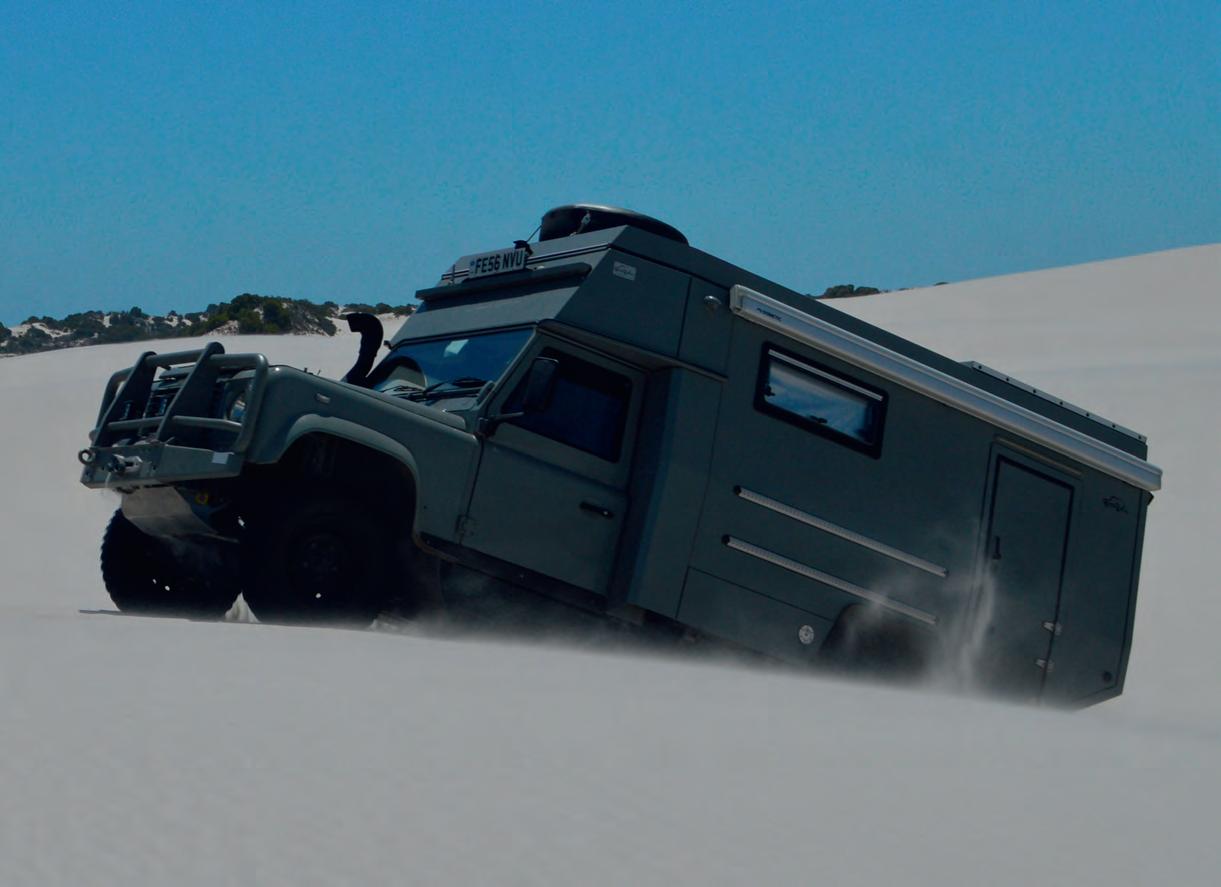
suggestions for other things to do in Cape Town. One of them also gave us a lift in his very capable Toyota FJ when we found dunes that were either too soft or too tight for us to tackle in the 130.
Back in Cape Town, we ticked off some more touristy things before getting down to business and making sure the Land Rover was washed, cleaned out and its oil changed ready to be loaded into a container and sent back to the UK. We had already spoken to Duncan at African Overlanders, who was looking after the shipping for us, and he had arranged a container share for January.
Did we feel a little crestfallen that our big trip hadn’t panned out the way we had originally intended? Not at all, no. The reason for changing our plans was as wonderful as they come, obviously – and besides the even bigger trip we now had ahead of us, we’d learnt a lot about Africa and a little about travelling, and we’d forgotten what winter is like in the UK.
Most of all, our 130 did an excellent job of being both our home and our transport.
It endured thousands of kilometres on truly awful roads, crossed the Kalahari desert, battled through ferocious thunderstorms, endured the blistering heat of summer in Botswana and dealt with a diet of rather suspect fuel in Namibia. We travelled just short of 13,000 kilometres (8000 miles) with no drama, no damage and no breakages, unless you count one single failed relay, and only got stuck once due entirely to operator error.
Would we have enjoyed the expedition as much in the roof-tented 110 that was our previous travel wagon? Well, now
we have a young family our next 4x4 is probably the answer to that question. Our children will be seeing the world with us from aboard an 18-ton Scania 4x4 crew-cab – and yes, it will have a camper conversion. The 130 may not have carried us as far as we intended, but it certainly showed us the road ahead.
Thanks to Michael Troup for his help in compiling this article. The 130 is currently for sale, priced at £85,000; if you’re interested, email alan.kidd@assignmentmedia.co.uk and we’ll pass it on
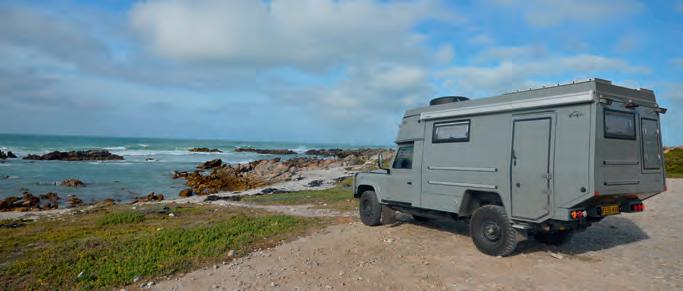







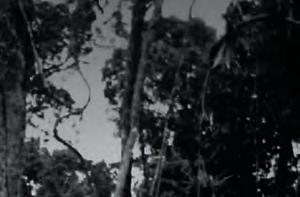
How GMC’s legendary 6x6 ‘Jimmy’ fought its way through the mud to help defeat Hitler: a tale of heroism on the fabled Red Ball Express
Volkswagen Commercials’ 40 years of 4-wheel drive
First test of the all-new Subaru Forester






Arctic Trucks’ AT37 take on the new Land Cruiser
APRIL 2025 ISSUE: ON SALE 13 MAR

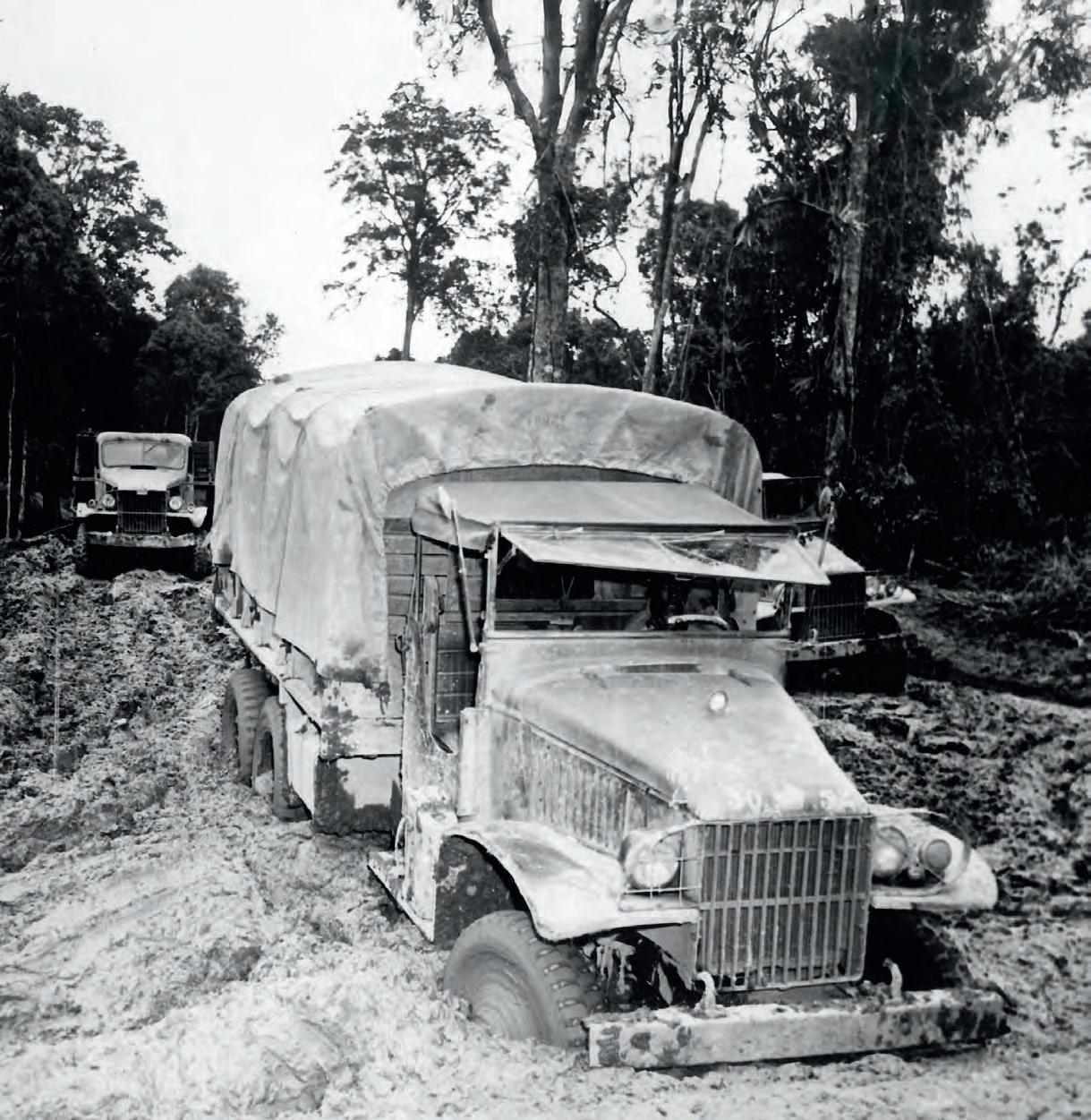







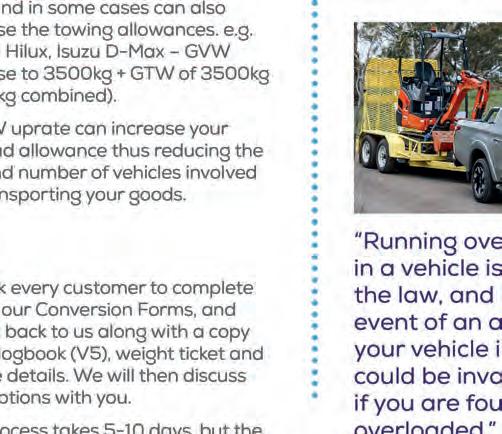












Work ready. Life ready. On or off-road ready. Isuzu’s award-winning pick-up is equipped with even smarter styling, stronger performance and safer technology. Delivering the reassuring capability and durability you expect from Isuzu, our tough workhorse takes comfort and refinement to the next level.



Wherever, whenever, The New Isuzu





